The cosmology of the Warcraft universe consists of several pairs of opposing cosmic forces. Among them are the powers of life and death dancing in their endless cycle. The power of death emanates from a realm of existence known as the Shadowlands, and it is here that the powers of undeath and necromancy were first developed by the militaristic Necrolords of Maldraxxus to create an army that could protect their world from invasions. However, knowledge of this magic would leak out into the living mortal realms, causing untold destruction and suffering through its unnatural presence on worlds like Azeroth. It would infect and corrupt living beings, giving rise to the practice of necromancy and the near annihilation of Azeroth by the undead on more than one occasion.
Table of Contents
Pre-Scourge Necromancy
The first known necrotic being on Azeroth was the great dragon, Galakrond. Once a simple proto-dragon in the prehistoric days of Azeroth, Galakrond developed an insatiable hunger that drove him to cannibalize and consume other proto-dragons, absorbing their life energies. Somehow, these energies, consumed in this way, warped and mutated Galakrond into a decaying monster who exuded necromantic energies so powerful that those he consumed would be regurgitated as undead bound to his will. It was only through the combined efforts of the titan watcher Tyr and the future dragon aspects that Galakrond was prevented from consuming and corrupting every living thing on Azeroth.

Galakrond's final battle against the five united future dragon aspects (source).
While necromancy would likely be discovered and implemented sporadically throughout Azeroth’s history—such as during the time of the great troll empires—it didn’t play such a large role as to be a worldwide threat until the Second War between the human Alliance and the orcish Horde. During this war, the orc warlock Gul'dan and his followers invented a new terrifying kind of warrior, the death knight. These death knights were created by infusing the soul of an orc warlock into the body of a fallen human knight. The first to be created in this way was Teron Gorefiend, who also became the leader of the Horde’s death knights in their campaigns of attack and infiltration on Azeroth. These death knights, however, were only a hint and precursor to the true terror of undeath that would afflict first the Eastern Kingdoms, and then the entire planet.
He was the first, you know, but only if you consider him a prequel and not the pilot episode.
Rise of the Lich King
The orcish Horde had initially been created and corrupted by Gul’dan and the demonic Burning Legion in an effort to ravage and weaken Azeroth to prepare it for a full-scale demon invasion. However, the Horde had failed in this task due to infighting among its members. The demon lord, Kil’jaeden, learned a lesson from this. His next attempt to weaken Azeroth would use an army that was blindly loyal and mindless, with only a single powerful will to control and direct them. To this end, he tortured and transformed the orc Ner’zhul into a being called The Lich King. Knowing that his creation could not be trusted on its own, Kil’jaeden imprisoned the Lich King in magic ice and bound his spirit to a powerful runeblade called Frostmourne, and a helmet called the Helm of Domination. Through a portal in the Twisting Nether, the demons sent the Lich King crashing onto Azeroth like a meteor, landing in the frozen continent of Northrend. The descent and crash warped his icy prison, shaping it into a throne, from which it would gain its future name of “The Frozen Throne”. To ensure the Legion’s puppet remained obedient, Kil’jaeden also sent five dreadlords to serve as his jailers: Mal'Ganis, Tichondrius, Balnazzar, Detheroc, and Varimathras. From the moment of his “rebirth”, the Lich King hated his jailers and was determined to play the part of obedient servant while secretly manipulating them to gain his freedom.
Ner’zhul was not the only orc who had been transformed by the Burning Legion into an undead being. His faithful followers were turned into the first powerful liches on Azeroth, serving their master’s will without question. The dreadlords immediately began constructing fortifications around the Frozen Throne, which would come to be known as Icecrown Citadel. The Lich King himself had been tasked with creating and spreading a necromantic plague that would choke all resistance away from Azeroth and raise the victims as loyal undead soldiers who would serve the Legion rather than opposing it. At the beginning, however, it would all have to be done in secret so that the populations of Azeroth wouldn’t know what hit them until it was far too late. With his mind alone, and still trapped in the Frozen Throne without a body, the Lich King carefully expanded his consciousness throughout Northrend, taking control of powerful beasts. Soon, he also ensnared many of the ice trolls of Zul’Drak and mighty tribes of vrykul—the giant ancestors of the human race.
While some undead vrykul would achive high forms of undeath, those that failed would be shamed, given lesser, rotting bodies, and known as Vargul.
From the vrykul, the Lich King learned of creatures called Val’kyr, powerful transformed spirits that could corral lesser spirits and travel to the Shadowlands. After many failed attempts, he succeeded in creating his own Val’kyr, which in turn greatly enhanced his own powers over undeath.
The original Val'kyr were created by the titan watcher Odyn to carry the souls of warriors to his Halls of Valor as defenders of the world. The Lich King had far less noble intentions for his creations.
Pleased with these early successes in growing his power, the Lich King crafted the very first strand of the plague of undeath, using his mind to maneuver it so that it would infect a small human settlement on the coast of the Dragonblight region of Northrend. With every person that died from this plague and was raised as undead, the Lich King grew stronger as their thoughts and awareness were added to his own. The more minds he controlled, the more powerful he became.
While almost all creatures on Northrend fell to his control with relative ease, there was one race that gave him trouble. These were the nerubians, an ancient race of insectoid that had evolved from the aqir—some of first servants of the old gods. From their underground kingdom of Azjol-Nerub, they waged a years-long conflict with the Lich King called The War of the Spider. While they proved difficult to conquer at first, the Lich King was at last able to kill their king, Anub'arak, and raise him and several other nerubians as his own servants. It was also from the nerubians that the floating ziggurats, such as Naxxramas, would originate, as the Lich King infused their buildings with magic, allowing them to sore in the sky as mobile floating fortresses.
Many undead nerubians would also be known as Crypt Fiends.
The Cult of the Damned
After the War of the Spider ended, the Lich King had complete uncontested control over all of Northrend, and sought to expand to the Eastern Kingdoms. The people in that region had been ravaged by war for years now, and would fall easily. To oversee the spread of the plague of undeath over there, he recruited a powerful mage from Dalaran named Kel'Thuzad. Kel’Thuzad had already been experimenting in the powers of necromancy against the orders of his fellow mages, and was eager to answer the Lich King’s call inside his head to further his knowledge.
Making the journey to Northrend, Kel’Thuzad was initially shocked and disgusted by what he was shown, as live humans were experimented on with the plague, and wanted to back out. He’d gone too far, however, and there was no turning back at this point. Thrown before the Frozen Throne itself, he was tasked by the Lich King with creating an army of loyal followers that would be called on to spread the plague of undeath among Eastern Kingdoms, ensuring it infected as many people as possible. Filled with visions and promises of such incomprehensible power, Kel’Thuzad embraced his new destiny and desire to serve the Lich King.

Let's be honest, we all get a little nervous when we meet our new boss for the first time (source).
Returning to the large and prosperous kingdom of Lordaeron, he disguised himself as a holy man and went about secretly forming the Cult of the Damned under the guise of a new religion that could bring prosperity and equality to the poor, and immortality, power, and wealth to the rich. Among the unwitting members of the cult, he selected the darkest and most loyal to train as necromancers in their new headquarters of Scholomance. It was in this school that the plague of undeath was perfected and secretly planted throughout Lordaeron to be sprung when the time was right. It was also where the first abominations were created by hacking apart courses and stitching them together into lumbering monsters.

Scholomance: the training grounds of the Cult of the Damned's necromancers, situated on the island of Caer Darrow (source).
As the years passed, the Lich King watched the alliances among the human kingdoms weaken and their strength fail to the point where he deemed that the time had come to unleash the plague. The cultists infected the grain supplies of the kingdom in order to quickly spread it and ensure it was consumed. Meanwhile, the Lich King had realized that there was a flaw in his plan to extend his influence to the outside world. He could control the undead, but they were weak on their own, being mighty only because of their sheer numbers. Kel’Thuzad was busy leading the Cult of the Damned, and the Lich King needed a personal champion to enact his will directly on the battlefield. Additionally, this champion would also aid him when the time came for him to at last rebel against the dreadlords imprisoning him. He had secretly revealed his plan to Kel’Thuzad, who promised to be loyal when the rebellion came. In the meantime, he tricked the dreadlords into allowing a champion to arise by making them think it was their own idea. The plan was to lure a powerful individual to the runeblade, Frostmourne, which the Lich King would break away from the Frozen Throne to be found. Upon grasping the weapon, their soul would be consumed and they would be shackled to the Lich King’s will. Now, it was just a matter of finding who was worthy to be enslaved.
Arthas: Champion of the Scourge
Kel’Thuzad’s cult continued to spread the plague throughout Lordaeron, slowly adding to the ranks of the undead army. It gained the new name of “the Scourge” from Kel’Thuzad, as he believed it would scour the living from Azeroth like cleansing flail. It became clear to the kingdom that this was no ordinary sickness, and Archmage Antonidas of Dalaran even speculated that it was magical in nature, but no one knew the full scope of its effects. Prince Arthas Menethil and Jaina Proudmoore were sent to lead an investigation team, with Arthas particularly passionate about stopping this threat to his people. As they learned more about the cult and Kel’Thuzad, and witnessed the horrific sight of the infected turning into undead and turning against their families and communities, Arthas became more and more obsessed with destroying the Cult of the Damned by any means necessary. The Lich King saw all of this through the eyes and minds of the undead he controlled, and decided that Arthas would make the perfect champion. Working with Kel’Thuzad and the dreadlords, they decided that Kel’Thuzad would have to face Arthas in combat and give his life to sell Arthas on the lie that the demon Mal’Ganis was behind the plague, concealing the Lich King’s existence.

Jaina and Arthas confront Kel'Thuzad in Warcraft III: Reforged.
The plan worked perfectly, and Arthas was quickly going down the road to madness, willing to slaughter anyone who he believed to be infected or in the way of him destroying Mal’Ganis. Perusing the dreadlord to Northrend, he learned about Frostmourne and believed it to be his only way to defeat Mal’Ganis. Taking up the blade, his soul was siphoned by the sword and the Lich King whispered directly in his mind, commanding him to destroy Mal’Ganis. The first of the Lich King’s jailers had been defeated, and now the Lich King had his champion.
Disappearing into the frozen wastes for days, the remains of Arthas’s humanity were shredded away as his mind was filled with dark powers and knowledge of necromantic magics. When he returned to his army’s camp, his skin was deathly pale and his hair was bone white, for he had been transformed into the first of a new kind of death knight, different from the ones the Horde had created so many years ago. Arthas slaughtered his own troops, raising them as undead. Some were made into death knights like himself, while others became simple ghouls, zombies, and other lesser forms. Returning home to Lordaeron, Arthas killed his own father and set out on a path of destruction as champion of the Scourge. His first task was to resurrect Kel’Thuzad as a lich by using the arcane magic of the Sunwell in the high elven city of Quel’Thalas.
While the high elves thought their city impenetrable, protected by magical wards and defended by skilled warriors led by their ranger-general, Sylvanas Windrunner, they were wrong. Through treachery and the power of the Scourge to raise fallen enemies into its service, Arthas and his army easily overcame every obstacle the elves put in their path. Arthas personally killed Sylvanas, and was so irritated with her nuisances that he chose to rip her soul from her body and enslave her, turning her into the first banshee of the Scourge.
After Kel’Thuzad was successfully transformed into a lich through the Sunwell’s magic, the two of them were assigned to the task of opening a portal to allow the Burning Legion general, Archimonde, and his personal forces entry to Azeroth. Once through, Archimonde quickly dismissed Arthas and Kel’Thuzad and assigned the undead forces to the dreadlords. In his mind, the Lich King had served its purpose like a useful tool, and was now disposable. They had done their job of weakening Azeroth, and now it was time for the demons to take over. On the Lich King’s orders, Arthas joined the Legion’s invasion of the continent of Kalimdor, seeking a way to dispose of the dreadlords. He found his opportunity in the form of the night elf Illidan Stormrage. Arthas told Illidan about the power that the dreadlord Tichondrius possessed in the Skull of Gul'dan, prompting Illidan to do the dirty work of killing the dreadlord himself and allowing the Lich King to be rid of another one of his jailers without any suspension falling on him. Archimonde and his demon forces would eventually be defeated at the Battle of Mount Hyjal as they sought to use the magic well beneath the World Tree, Nordassil, to open a larger portal for more demons to come though. The united forces of night elves, led by Tyrande and Malfurion, alliance refugees, led by Jaina Proudmoore, and the newly-reformed Horde, led by Thrall, destroyed the Legion general and his armies, but remained unaware of the undead power that was still growing in the north.
With the Legion invasion defeated and weakened, the Lich King now rebelled openly, refusing the commands of his creator Kil’jaeden. In response, the demon lord recruited Illidan to lead an army that would destroy the now-rogue Lich King. Illidan’s first attempt was to use a powerful magical artifact called the Eye of Sargeras to pummel the Frozen Throne from a distance and destroy the Lich King that way. However, the ritual spell caused so much collateral damage to the land that a united force of night elves and high elf survivors from Quel’Thalas felt the need to stop him, not knowing that Illidan was trying to save them all from the source of the undead itself. This, combined with Scourge forces sent by the Lich King to protect himself, ruined Illidan’s plan and forced him to retreat. He had failed to destroy the Frozen Throne, but he had managed to weaken it. Now cracked, the Lich King’s power and essence was starting to leak out of the Frozen Throne, causing both him and his death knights to grow weaker.
One effect of the Lich King losing so much power was that his control over the undead started to weaken, and those with enough intelligence left once again began to experience something they had never known since their deaths: free will. They were united and led by the now-free Sylvanas Windrunner and swore vengeance on the Scourge that had destroyed their lives. Ever since the Legion’s defeat and the Lich King’s open rebellion, his remaining three dreadlord jailers had been in hiding, seeking their own vengeance. The two forces united to capture the weakened Arthas, only for him to be rescued by Kel’Thuzad. While the lich would remain in the Eastern Kingdoms and work to conquer it for the Scourge, battling both the living and the Forsaken, Arthas was called to the Frozen Throne to defend the Lich King from another attack by Illidan’s forces. After reaching Icecrown, and narrowly defeating Illidan in a duel, Arthas obeyed the Lich King’s command to don the Helm of Domination. By this act, Arthas and the Lich King merged into one being, and the former prince took his seat on the Frozen Throne as the new leader of the Scourge. He would slumber for many years before launching his next grand attack on the world.
Scourge, Forsaken, and Paladins, Oh My!
Meanwhile, Sylvanas’ Forsaken rejected the offer of the dreadlords to enter their service, not wishing to exchange one master for another, and went to war. Sylvanas managed to beat one of them into submission, named Varimathras and recruited him to her side, although she knew she would always have to keep an eye on him for his inevitable betrayal someday. The other two were not so lucky, and were soundly defeated by Sylvanas in the ruins of Lordaeron’s capital city, destroyed by Arthas back when he killed his father. It was here that she and her Forsaken made their new home, living underground in what would be known as the Undercity.
While the dreadlord Balnazzar had been defeated by Sylvanas, he had managed to secretly escape at the last second, desperate to hide from the Scourge and Forsaken who hunted him, his own control over the undead was very limited without aid. To protect himself and gain the aid of an army once again, he killed a venerated paladin leader named Saidan Dathrohan, also known as Saidan the Scarlet, one of the survivors of the Silver Hand who had escaped Arthas, and assumed his form in order to infiltrate the paladins. By taking the shape of someone so well-respected, he was able to corrupt and twist many of the Silver Hand survivors into his own radical order called the Scarlet Crusade. While the members of this order believed themselves to be fighting the undead for the protection of the people of the Eastern Kingdoms, in reality, they were merely defending a demon from the minions that had slipped from his control. They would become a fierce opponent of both the Scourge and Forsaken, seeing no difference between those undead under the Lich King’s command and those who had regained a sense of free will.
One paladin, however, appeared to be beyond corruption, and would have to be dealt with. This man was named Alexandros Mograine, the wielder of a holy sword called the Ashbringer that was especially powerful against the undead. Balnazzar corrupted Alexandros’s son, Renault, and convinced him to use the Ashbringer to betray and murder his own father. The remains of the paladin’s body were recovered by the Scourge and brought to Kel’Thuzad’s headquarters of Naxxramas, where the lich raised Alexandros as a powerful mind-controlled death knight, and not just any death knight. Alexandros was made the leader of the Four Horsemen, the most feared soldiers of the Scourge and Kel’Thuzad’s greatest creation. The other three horsemen were Thane Korth'azz, Lady Blaumeux and Sir Zeliek. They were bound to Kel’Thuzad himself, and could never truly die as death knights until he did.

Alexandros is transformed into a death knight by Kel'Thuzad, and wields the corrupted Ashbringer.
While the Scarlet Crusade fell to corruption, another new order would split off who suspected—but could not prove—that some dark force was affecting the Crusade. They would be called the Argent Dawn, and would follow a purer path and be disgusted by the Scarlet Crusade's corrupted methods. They headquartered in a holy site called Light’s Hope Chapel that was protected by powerful holy magic.
Amidst these struggles between the Scourge and the paladins, Sylvanas and her Forsaken would find new allies for themselves in the form of the Horde. Beset by enemies on all sides, who all either wanted to control or destroy the Forsaken, she found unexpected help in the form of the Tauren people. While the Alliance, and her former home of Quel’Thalas, feared the undead, not understanding that they had free will now, the Tauren archdruid Hamuul Runetotem believed that the Forsaken could be redeemed spiritually. After consulting with his chieftain, Cairne Bloodhoof, and the warchief of the Horde, Thrall, it was agreed that the Forsaken would be allowed into the Horde. This choice was made both out of sympathy for what they had gone through, and a sense of strategic value against both the Alliance and Scourge if either should pose a threat.
Back in the Plaguelands, the Scarlet Crusade and Argent Dawn continued their struggle against the endless swarms of undead that came from Naxxramas and the plague of undeath. One of the Argent Dawn’s newest members was the other son of Alexandros Mograine, Darion Mograine. Learning of his father’s fate, Darion managed to infiltrate Naxxramas with a small strike team and defeat his father in an attempt to free him. However, his soul was still trapped in the Ashbringer, and the blade itself corrupted by the act of betrayal it had been used for. After losing Alexandros, Kel’Thuzad promoted Baron Rivendare as the new leader of the Horsemen.
The Argent Dawn in Light’s Hope Chapel posed a great threat to Kel’Thuzad’s conquest for the Scourge, as it could resist his undead forces and magic. He was determined to destroy it and launched a massive attack that severally outnumbered the chapel’s defenders. In the middle of the battle, Darion realized that the only way to drive back the Scourge was by releasing his father’s spirit from the Ashbringer, and so he impaled himself with the blade, committing the ultimate sacrifice to undo the ultimate betrayal that had killed his father in the first place. Not only was his father’s spirit freed, but the heroic souls interred beneath the chapel were also awakened, and their holy fury proved enough to lay waist to the entire Scourge invasion. Alas for Darion, his own body was recovered by Kel’Thuzad as compensation for the loss of the battle, and he was raised as death knight himself, along with the still-corrupted Ashbringer.
Naxxramas: Round One
Far in the north, on the Frozen Throne, Arthas the Lich King watched the world through the eyes and minds of his undead minions. He saw how the people of Azeroth faced battle after battle against each other, as well as powerful beings like Ragnaros the Firelord, Hakkar, the Soulflayer, and, most recently, the invasion of Ahn’Qiraj and the defeat of the Old God C'Thun. For every fight the heroes of Azeroth won, there was a massive drain on their resources and the inevitable fatigue of constant battle. He determined that now was the perfect time to unleash the full might of Naxxramas, as well as the other necropolis under his command, on Azeroth and probe for weaknesses for a future full-scale invasion. Giant floating ziggurats appeared all over Azeroth, assaulting the local populace. While the hovering forts were wide-spread, the Argent Dawn determined that Naxxramas was still the primary power behind the invasion, and that they could end it all by striking at the heart. Heroes of the Alliance were sent to assist the Argent Dawn in their invasion, as repeated attacks from both them and the Scarlet Crusade had managed to weaken Naxxramas’ defenses enough to allow an infiltration team to enter. The heroes battled against many horrific members and creations of the Scourge throughout the various wings of the fortress until they faced Kel’Thuzad himself. While they were victorious in defeating the lich, they were manipulated into not destroying his phylactery to end him for good. Instead, they gave it to a member of the Argent Dawn named Father Inigo Montoy, who later betrayed his order and returned the phylactery to the Scourge. As a reward, he was transformed into a lich himself named Thel'zan the Duskbringer, and Kel’Thuzad would be allowed to eventually regain corporal form.

Naxramas hovering over the ruined city of Stratholme in the Plaguelands (source).
For the next few years, little of note occurred involving the undead, as the defeat of Kel’Thuzad had severely weakened the Scourge’s forces. While some still roamed the Plaguelands, the main place they directly threatened was Quel’Thalas. The blood elves had never fully recovered from Arthas’ attack and the remaining undead were just one of their worries. Much like Sylvanas and the Forsaken had been before; the blood elves were in desperate need of allies. Perhaps for these reasons, or likely for secret ulterior motives, Sylvanas reached out as a mediation to bring her former people into the Horde. This uniting of forces was a great boon to all involved parties, especially since the Burning Legion was posing a threat from the world of Outland on the other side of the Dark Portal. The invasion was prevented, but the undead never rest long. The Lich King was now ready to make his move for complete conquest of Azeroth.
Wrath of the Lich King
When Arthas Menethil had become one with the Lich King, his spirit had spent years battling with Ner’zhul’s over the control. In the end, Arthas won and assumed complete dominance over the Scourge. Still wracked with corruption and madness, he was convinced that a world ruled by the undead would be free of war, injustice, and all moral flaws that came from pesky things like emotions and free will. If he was in charge of everything, no other threat would be able to conquer Azeroth, not demons, not old gods, not anything else. Such was his deluded vision, and he had a plan to ensure it was accomplished quickly. He would not simply send out the Scourge to conquer Azeroth, as that was a tactic that had failed in the past. Instead, much like he himself had been lured and ensnared by Frostmourne, he would lure the most powerful champions of Azeroth to the Frozen Throne and enslave them as his own minions. With the strongest members of the Alliance and Horde under his control, it would only be a matter of time before the rest of the world fell in a war of attrition. His victory would be inevitable.
As the Lich King raised and readied his full army in Northrend, he ordered the undead to infect the food supplies of the Alliance and Horde with the plague of undeath and launch brutal attacks against them in order to stir them to action and goad them into coming to attack him. These attacks were especially painful for the Alliance, as many of them were old enough to remember the first time this had happened, and seeing it again reopened old wounds. These feint attacks proved very successful in mobilizing both factions in their resolve to defeat the Lich King once and for all.
While his plans were unfurling flawlessly, there was a setback coming that the Lich King had never expected, defection from his own forces. He had tasked the death knight Darion Mograine with leading a full assault on Light’s Hope Chapel in an effort to draw out and kill one particularly strong paladin, Tirion Fordring, before he could prove himself a significant threat. This plan completely backfired. When Darion learned that he and his fellow death knights were simply being used as cannon fodder, he turned on the Lich King, who had personally joined the battle at this point to kill Tirion himself. As the paladin’s soul was being absorbed by Frostmourne, Darion tossed the Ashbringer to Tirion, who was able to purify and restore it to its original holy power to drive off the Lich King and Scourge forces. On that day, Darion and many other death knights were freed from the Lich King’s direct mind control, and vowed to take their vengeance on him. They formed a faction call the Knights of the Ebon Blade, and seized a ziggurat that they named Acherus: The Ebon Hold. Many would return to their old homes in the Alliance and Horde to fight alongside them. They would be treated with great suspicion by the populace, but gradually prove themselves as valuable allies.

Danion leads the Scourge in the attack on Light's Hope Chapel (source).
With their forces newly bolstered by the death knight defectors, the Alliance and Horde sent their armies to establish beachheads in Northrend. The Alliance forces were called the Valiance Expedition and were led by Bolvar Fordragon, tasked by King Varian Wrynn with completely eliminating the Scourge. The Horde forces were called the Warsong Offensive and led by the young orcish commander, Garrosh Hellscream. Both armies faced their own sets of undead challenges, gradually marching deeper into the continent, and the seat of the Lich King’s power.
Naxxramas: Round Two
While the Lich King wanted the armies to come to him, he couldn’t allow them to do so at full strength, where they might actually prove a legitimate threat. Besides, he still had to weed out the strong from the weak to be raised as his champions, so he launched vicious counter-attacks to wear them down. The first of these major attacks was the return of the reborn Kel’Thuzad, more powerful than before and once again leading his forces from Naxxramas. The lich was a master of strategy, attacking the Horde and Alliance with overwhelming force from all sides and dividing them through chaos sowed by his spies. However, Naxxramas’ close position of hovering directly over the battles inadvertently left it open to infiltration. Once again, heroes stormed the fortress, purged the evil from its halls, and prepared to do battle with Kel’Thuzad again.

Naxramas hovering about the battlegrounds in Dragonblight (source).
The heroes fought through four quarter-sections of the necropolis, each one housing different horrors. In the Arachnid Quarter, they faced insectoid monsters, such as the Nerubian Spider Lord, Anub'Rekhan, the elite cultist, Grand Widow Faerlina, and the giant spider, Maexxna. In the Plague Quarter, they faced powerful necromancers and creatures who wielded the plague of undeath, such as Noth the Plaguebringer, Heigan the Unclean, and Loatheb. In the Military Quarter, they faced powerful death knights and their trainer, Instructor Razuvious, as well as Gothik the Harvester’s personal undead army, and the Four Horsemen themselves. The Construct quarter was filled with revolting flesh beasts, abominations, and other powerful undead creations that had been stitched together as unstoppable powerhouses for the Scourge. Among the most powerful were Patchwerk, Grobbulus, Gluth, and Thaddius, with the latter being supported by the 'caretakers' of the wing, Feugen and Stalagg. After clearing out every quarter, the way was at last opened to Kel’Thuzad’s inner sanctum, guarded by the undead dragon, Sapphiron. When the bony beast fell, nothing stood between the lich and the righteous vengeance of his attackers. As before, the lich’s power was not enough to save him, and his fall marked a giant loss for the Lich King and the Scourge.
The Wrathgate Incident
The Lich King had not expected such a major loss, and his ultimate strategy was threatened by it, but he would get a reprieve from an unexpected interjection from a third party, the Forsaken. Back in the Undercity, two factions had formed: those undead loyal to Sylvanas, and those loyal to the dreadlord she had allowed into her service, Varimathras. Sylvanas, who was far from altruistic and had schemes within schemes, had ordered the creation of a new plague, one that could kill living and undead alike. Varimathras had convinced a powerful Forsaken alchemist, Grand Apothecary Putress, that the Burning Legion had more to offer him than Sylvanas did. The two staged a rebellion that drove Sylvanas from Undercity, but what happened next would be shrouded by debate and mystery for years in terms of who was responsible.
The Horde and Alliance had fought their way to the Wrathgate, the southern entrance to Icecrown. To the Lich King’s surprise, they carved through his forces, forcing him to take a personal hand in the matter. Even with his imposing presence, the Alliance and Horde might have won that day, had Putress and several Forsaken not appeared on the cliffs overlooking the battle, catapulting barrels of the new plague and crying out “Death to the Scourge, and death to the living”. Many fell that day on all sides. The Lich King was forced to retreat, and the plague was only stopped from consuming all of Northrend by Alexstrasza’s red dragonflight, as their magical firebreath purged the plague. When the smoke cleared, many bodies were missing, including that of Bolvar Fordragon. The Scourge had claimed them.
Suspicion instantly fell on Sylvanas, but she protested that she was the victim in the situation, having been driven from her home, and that she hadn’t known anything about Putress’ plans. A great battle for Undercity was waged to retake it from the usurpers. Thrall and Sylvanas led attacks against Varimathras and defeated him, while Varian stormed the city’s sewers to take out Putress. Varian had intended to retake the ruins of Lordearon for the Alliance, to whom it had once belonged, but was prevented from doing so. Sylvanas was back in power in Undercity, but many still believed that she had either known about, or even ordered the attack at the Wrathgate in an attempt to both take her vengeance on the Lich King, and scour her enemies among the living at the same time.
Fall of the Lich King
After the disaster at the Wrathgate, Tirion Fordring came to the conclusion that assaulting Icecrown Citadel with massive armies would be a bad idea, as every member of their armies that fell would be risen up as undead and turned against them. Instead, he decided that it would be best to hold a grand tournament, known as the Argent Tournament after his united force called the Argent Crusade. Through this contest, he could choose the most powerful champions to lead a surgical strike team against the Frozen Throne itself.

The Crusader's Colosseum, contest grounds of the Argent Tournament in the region of Icecrown. In Hearthstone, this contest would be the inspiration for the Grand Tournament (source).
When the champions had been chosen, the attack was launched. The mortals pummeled a hole in the fortresses’ defenses and managed to overtake its primary defenses: a powerful bone amalgamation named Lord Marrowgar and a lich named Lady Deathwhisper who served as another leader of the Cult of the Damned. As they ascended through the levels of the citadel, they were attacked by one of the Horde’s former champions, Dranosh Saurfang, who had died at the Wrathgate and been raised as a death knight known as Deathbringer Saurfang. In a wing of the citadel called The Plagueworks, they faced off and destroyed the mad scientist, Professor Putricide, along with his most powerful (and disgusting) creations, Rotface and Festergut. Another wing was known as The Crimson Hall, where the San’layn princes dwelled: Prince Valanar, Prince Keleseth, Prince Taldaram, and their leader, Blood-Queen Lana'thel. Much like in Naxxramas, the way to the Lich King and the Frozen Throne was blocked by a powerful undead dragon named Sindragosa, who in life had been a consort of Malygos.
When the champions at last cleaved their way to the Lich King himself, they were shocked to discover Bolvar Fordragon, still alive and being tormented by the Lich King in an effort to corrupt him into a death knight. His body had been blackened and disfigured by the enchanted fire of the red dragons, but he still resisted the attempts to turn him to darkness. At this point, the champions were exhausted and weakened, just as the Lich King had planned. Joined by Tirion himself, they struggled valorously in their fight against the master of the Scourge, but to no avail. Tirion was frozen in a block of ice to watch as the Lich King overwhelmed and slaughtered them all, preparing to raise them into undeath as his unstoppable world-conquering force. At the last moment, empowered by the Light, Tirion managed to break free of the entrapping ice and use the Ashbringer to destroy Frostmourne. Instantly, the souls trapped inside the blade broke free, swarming around the evil tyrant who had tormented and imprisoned them. The spirit of Arthas’ own father, Terenas Menethil II, raised the fallen champions back to life. Now without Frostmourne, the source of so much of his power, the Lich King fell. In his last moments, Arthas felt the corruption leave him, and for the first time felt a sense of the severity of his actions before being whisked away to a region of the afterlife known as The Maw, where he would suffer eternal torment.

The New Lords of Death
While the Lich King was dead, the Scourge remained. Terenas’s spirit warned Tirion that, if left uncontrolled without a will to guide them, the Scourge would run rampant all over Azeroth. They needed a new Lich King, a jailer of the damned, to keep them in line. Now free of his shackles, Bolvar insisted on being the one to carry this burden. His body was broken, and he could never return to the life he’d had before. His last wish as he donned the Lich King’s Helm of Domination was that he be forgotten, and that the world believe that the Lich King was gone forever so that they could live without fear.
Bolvar becomes the new Lich King cinematic from World of Warcraft.
While he had been a paladin in life, taking on the position of Lich King meant that Bolvar could no longer use the power of the Light, only his new necromantic powers. However, he still maintained his sense of justice and values from life, and struggled to reconcile them with his new position, and even to keep his sanity. He also struggled to control the undead, as many of them still followed Arthas’s old orders to terrorize the Plaguelands and attack anyone they saw.
Bolvar, scarred by the red dragon's fire, just before donning the Helm of Domination and becoming the new Lich King.
Sylvanas Windrunner, the Banshee Queen of the Forsaken, had spent every moment of her post-death existence with one single goal: taking revenge on Arthas. She bemoaned the fact that she had not been able to land the killing blow herself, and now her existence felt meaningless. In despair, she cast herself off of the highest point of Icecrown Citadel, dying as she pierced herself on the jagged spikes of saronite below, a mysterious material that could destroy the body and soul of undead. Instantly, she found herself in an afterlife of torment, surrounded by the Val’kyr. These carriers of souls wanted to be free of the Lich King’s control, and offered to serve Sylvanas and return her to life if she bound herself to them in a pact. They told her that, without her, the Forsaken would become extinct as a race, and that she had to return to lead them. Eager to escape her newfound eternity of suffering, Sylvanas agreed. On the Frozen Throne, Bolvar suddenly found himself cut off and unable to control the Val’kyr, which further harmed his attempts to control and keep the undead in check.
Now that she had the powers of the Val’kyr at her disposal, Sylvanas began raising new forsaken to replenish their ranks and “help the race survive”. She also hungered to destroy the human kingdom of Gilneas, long protected from the undead by high walls that had been erected back before the first undead plague. Two factors allowed her to achieve this desire. The first was the Cataclysm that had been caused by the elemental upheaval and emergence of Deathwing, who was under orders from [Hearthstone Card (N’Zoth, the Corruptor) Not Found] to cause destruction and bring about the end of all things. The earthquakes caused by Deathwing’s rampage destroyed parts of the great Greymane Wall, leaving the kingdom vulnerable for the first time in years. The second factor was that the peace-loving and reasonable Thrall had stepped down from the position of Warchief of the Horde in order to focus on repairing the damage to the elements with his shaman powers. The new warchief was Garrosh Hellscream, and he was thirsty for war with the Alliance. Sylvanas convinced him to let her lead the conquest of Gilneas. Garrosh was disgusted with raising of new undead, questioning whether there was even any difference between her and the Lich King at this point, but still allowed her to command the invasion. To make matters worse, the people of Gilneas had recently been afflicted with the Worgen Curse, which turned them into savage beasts that attacked friend and foe alike. Luckily for them, they encounter night elf druids who were able to give them control over their transformations and bring balance to their lives. With their new bestial abilities, the Gilneans put up a fierce resistance to the undead invasion of their home. Sylvanas almost killed the king, Genn Greymane, with a poisoned arrow, but his son, Prince Liam, saved his father by jumping in front of him and dying from the arrow himself. In a final effort to take the kingdom, Sylvanas disobeyed Garrosh’s orders and bombed it with the plague, forcing Genn and his people to retreat and abandon their homeland, living as refugees among the night elves who had come to their aid. The loss of both his kingdom and son would forever burn in Genn’s heart, vowing vengeance against the Horde in general, and against Sylvanas and her undead in particular.

Genn Greymane mourns his dead son as Sylvanas rides away from her fresh kill.
In the battles against the worgen attempting to reclaim their land, led by Darius Crowley, Sylvanas ordered the resurrection of the Gilnean traitor, Lord Godfrey. This proved to be a mistake, as Godfrey also turned traitor on the Forsaken and shot Sylvanas in the back, killing her and fleeing to Shadowfang Keep. Sylvanas was resurrected once again by three val’kyr sacrificing themselves to take her place in death, leaving her even more convinced that their power was the key to her future and the future of the Forsaken.
For the next several years, the Forsaken would serve in the ranks of the Horde, working towards its goals and having little recorded about any unique accomplishments for themselves as a race. However, around the period of the rediscovery of Pandaria, one particular undead made quite the impact regarding the remains of two dangerous factions: the old Scourge remnants at Scholomance, and the Scarlet Crusade. Her name was Lilian Voss, and she had been raised in the Scarlet Crusade by her father, High Priest Voss, to be a master of combat against the undead. Stealth, martial arts, arcane sorcery, she was a living weapon, capable of annihilating entire forces on her own. She didn’t take kindly to being raised into undeath and transformed into the very thing she had fought for so many years, but the refusal of her father and the Scarlet Crusade to accept her as an undead drove her to embrace it and vow their destruction for attempting to kill her. She led an operation of adventurers to kill the powerful leader of the Crusade, High Inquisitor Whitemane. Afterwards, she turned her wrath against another group that would seek to dominate her, the necromancers and Scourge remnants that still resided in their old stronghold of Scholomance. While she was temporarily controlled by the headmaster of the school, Darkmaster Gandling, she was broken free by her comrades and would survive the mission to take active roles in the future regarding the fate of the undead.
Re-imaginings of younger versions of Lilian Voss and Darkmaster Gandling from Hearthstone's Scholomance Academy
Undead vs. Demons
All this time, Sylvanas Windrunner had ruled the Forsaken in the shadows of Undercity, having little interactions of note with the rest of the Horde. That changed at the start of the Burning Legion’s third invasion of Azeroth. The Horde and Alliance attempted to unite and stop the powerful demon forces and drive them back before the invasion could truly begin at the Tomb of Sargeras on an island called the Broken Shore. Alas, their attempts were met with failure, and each faction suffered the death of their leader. The Alliance lost King Varian Wrynn, and the Horde lost their warchief, Vol'jin—who had only held the position for a couple years before dying. In his dying moments, Vol’jin felt a powerful spirit tell him to name Sylvanas as his successor. Believing that it was the loa he worshiped, he obeyed, but it was secretly something far more sinister.
Now Warchief, Sylvanas organized campaigns against the demon invasion, but her main focus was on destroying the Alliance and increasing her own power. Traveling to the undead realm of Helheim, she struck a bargain with the fallen titan-keeper Helya, and was given a magical lantern that she could use to enslave and create more Val’kyr. With this power, she would be unlimited in her ability to raise new Forsaken, and could use the Val’kyr to stave off death for herself, making her effectively immortal. However, while she attempted to use the lantern to enslave the Val’kyr queen, Eyir, she was ambushed by the vengeful Genn Greymane. While the worgen king was unable to slay his enemy, he was able to destroy the lantern, robbing Sylvanas of her plans for her immortal future, just as she had robbed him of his son's future.
While the Horde and Alliance had failed in their attempt to stop the Legion’s invasion, other neutral factions stepped in to lead the charge. One of these groups was the Knights of the Ebon Blade, who had recently worked out an agreement with the new Lich King. While they were not bound to his will, they would act as his agents against the demons. In return, Bolvar the Lich King would ensure that the Scourge was contained to Northrend. Champions of the Ebon Blade were directed by the Lich King to obtain three powerful weapons of undeath that would give them an advantage against the demons’ power. First was an axe forged by the Legion itself over a thousand years ago, known as the Maw of the Damned. It had the power to drain the life force of its victims, bleeding them dry. The second weapon was a demonic sword called Apocalypse that had been created by dreadlords and used to spread violence, plagues, and death in ages past by legion infiltrators. It had since been sealed away in the tower of Karazhan, from which the Ebon Blade retrieved it. The final weapon was different, as it was not a retrieval of a demon weapon, but the reforging of Frostmourne. The runeblade had been shattered ever since the death of Arthas, but the Lich King instructed for the shards to be turned into two new smaller blades, Frostreaper, and Icebringer. Together, they would be known as the Blades of the Fallen Prince.



The three death knight artifact weapons, used by the Ebon Blade to defeat the Burning Legion. From left to right: The Maw of the Damned, Apocalypse, and the Blades of the Fallen Prince.
Once these weapons had been obtained, their wielders received the Lich King’s blessing, infused with the power to raise powerful death knights of their own. With this power, they were tasked by the Lich King to reform the Four Horsemen by raising powerful leaders from across Azeroth. The first of these was the orc general, Deathlord Nazgrim, who had held a high position in the Horde and perished in the rebellion against the rule of Garrosh Hellscream as Warchief. The second horseman was Thoras Trollbane, a king who had helped to found the first Alliance and had died back in the Second War. Thirdly was the undead resurrection of Inquisitor Whitemane, the same one who had been killed by Lilian Voss, although the experience of death had tempered her more radical nature. Lastly, the Lich King ordered that the Ebon Blade storm Light’s Hope Chapel and raise the recently-deceased Tirion Fordring as the last horseman. However, the power of the Light in the consecrated grounds, as well as the reformed Order of the Silver Hand, proved to be too powerful for the death knights to overcome. Darion Mograine was killed in the battle, only to be resurrected and empowered as the fourth horseman himself, filling the very role that his father had been forced into so many years ago.

The newly-raised Four Horsemen during the Legion Invasion on the Broken Isles (source).
As the war against the Legion waged on, many of Azeroth’s defenders from all races fell in battle. Of these fallen, many were chosen to be raised as death knights and be given the chance to continue fighting. This further increased the ranks of the Ebon Blade, as death knights of new races walked their halls.
After many struggles, the Burning Legion was defeated, but not before its leader, Sargeras, plunged his giant sword into Azeroth, wounding the planet and causing a powerful substance called azerite to bubble to the surface. This azerite was the lifeblood of the titan world-soul that slumbered at the planet’s core, and its power proved far too tempting for Warchief Sylvanas to resist.
Tyranny of the Banshee Warchief
In the meantime, however, the banshee queen had other matters to attend to. Her position as warchief of the entire Horde had left the Forsaken in Undercity feeling neglected. In the vacuum of her absence, a new ruling body had risen called the Desolate Council. Many of the members of this council wished to have a stronger connection between their past lives and their current undead ones, rather than the common practice of shunning the living. Some of them were even working with the new king of Stormwind, Anduin Wrynn, to stage a reunion between them and their still living relatives as a way of working towards peace. Unfortunately for them, their queen wished for them to hold on to their hatred of living humans, and feared that they would defect to the Alliance if they found peace and acceptance there. The last straw was when Calia Menethil, sister of Arthas and rightful queen of Lordaeron, attempted to use the reunion as a rally to make her claim as rightful ruler of her people. In response, Sylvanas slaughtered the living humans at the meeting, as well as any Forsaken who looked like they might be even slightly considering the offer. Sylvanas Windrunner would tolerate no threats to her power and rule, and used the failed reunion to spread further hatred for the living among her undead subjects. Calia was killed with the others, but resurrected into a new, holier kind of undeath by a naaru.
Returning to the Horde, Sylvanas convinced the other Horde leaders, including the orc veteran Varok Saurfang, that the new discovery of azerite would shift the balance of power in Azeroth, and that they must declare war on the Alliance in order to seize the azerite. Otherwise, she convinced them, it was inevitable that the Alliance would use it to destroy them. In order to sow discord and division among the Alliance, she led the Horde in invading the lands of the night elves, and event known as the War of Thorns. While her initial plan had been to capture the elves’ giant home tree of Teldrassil and hold the people hostage in order to negotiate from a position of power, this plan was disrupted by Saurfang’s refusal to kill Malfurion with a dishonorable blow from his back. Knowing that she would need to utterly crush all remaining hope from the night elves, Sylvanas ordered Teldrassil burned, killing a large portion of the night elf population and leaving them as refugees with no home.
In response to this unprovoked act of aggression, the Alliance launched the Battle for Loraedron to capture Undercity for the Alliance and bring Sylvanas to justice for her crimes. Instead, of capturing the warchief and city, though, they barely escaped with their lives. Sylvanas had rigged all of the Undercity and Lordaeron Keep to explode with her plague, known as blight. If she couldn’t have the city, no one could. Undercity was now uninhabitable by living or undead, and the Forsaken were forced to relocate as refugees in Orgrimmar. These events launched what would be known as the Fourth War.
Sylvanas’s iron-fisted degrees and morally reprehensible tactics in the war divided the Horde. Many stayed loyal to her, including most of the Forsaken. She had masterfully utilized psychologically manipulative tactics to ensure they remained angry and spiteful towards the Alliance. Many new Forsaken were raised to fill her ranks from the slain night elves, and pitted against their former kindred when Tyrande fought to retake the night elf lands in the Battle for Darkshore.
Another repulsive tactic Sylvanas use was the raising Derek Proudmoore — Jaina Proudmoore’s long-dead brother — into undeath and working to brainwash him to use as a weapon against the Alliance. This didn’t sit well with many members of the Horde, including Baine Bloodhoof and a recently-raised Kul Tiran undead named Thomas Zelling. Free will was what was supposed to distinguished Forsaken from the Scourge, and Garrosh Hellscream’s old question had become relevant again. Was there even a difference between Sylvanas and the Lich King at this point? Baine and Zelling aided in Derek Proudmoore's escape to his sister’s care, which subsequently led to Sylvanas executing Zelling for treason and imprisoning Baine for a more public execution to demonstrate that any defiance of her rule would be swiftly destroyed.
Resistance was brewing, though. Saurfang had retrieved Thrall from his retirement in Outland, and united with the Alliance to save the Horde, and the world, from Sylvanas’s nihilistic tyranny. Together, they rescued Baine and prepared to storm Orgrimmar to remove the banshee queen by force. However, at the last moment, Saurfang decided that the lives of the Horde that supported Sylvanas were worth preserving, and opted to challenge the warchief in a one on one duel to the death. Sylvanas won, but not before being driven to such rage that she let slip her true disdain for the Horde and Forsaken, saying they were all “nothing” and that they were only pawns to her. After outing herself, she fled with a very few remaining loyal followers to enact the next stage of her true plan.
Now left without a leader, the Horde decided to do away with the title of Warchief and rule by a council of representatives instead. Lilian Voss was chosen to represent the Forsaken at the council, and reached out to the now-undead Calia Menethil to come and help lead her people.
Now hunted by both factions, Sylvanas and her loyalists, such as Nathanos Blightcaller, Dark Ranger Lenara, and Sira Moonwarden, worked from the shadows to topple any rivals she might have in her quest to assert dominion of the power of death. While Sylvanas personally attacked Icecrown to assault Bolvar the Lich King, she sent Nathanos and Sira to kill the troll loa of death, Bwonsamdi. While that plan was thwarted, leaving Bwonsamdi alive and able to protect troll souls from Sylvanas’ power, Bolvar was not so lucky. With new and greater powers she had been granted from the Jailer —a malevolent being who ruled over the Maw in the Shadowlands— Sylvanas overpowered Bolvar and ripped the Helm of Domination, the source of his power, from his head. Rather than claim the power for herself, however, she destroyed the Helm, sundering the veil between Azeroth and the Shadowlands themselves.
It is currently unknown what the full extent of Sylvanas’s plan is, or what her true motives are. More will be revealed once Azeroth’s champions enter the Shadowlands to combat the evil forces that she has unleashed upon them.
Types of Undead
Among the undead, there is a great variety of greater and lesser forms that they can be raised into, depending on the intentions and necromantic skill of the one who raises them. While not an exhaustive list by an means, here are the ones that have featured in Hearthstone as cards so far.
Abomination
Abominations are artificial undead constructed by necromancers by combining multiple dead limbs and body parts from many different corpses. They naturally hunger for flesh, and will hack and eat the living and dead alike. They are famously stupid and lumbering, but are still extremely dangerous. The first abominations were created by Kel’Thuzad and the Cult of the Damned in Scholomance, and many have been created and used in the armies of the Scourge and Forsaken alike.
In addition to the typical Abomination, several “specialized” versions have also been created. Flesh Beasts are special, extra large, extra gross varieties that were created by Professor Putricide in his laboratory in Icecrown Citadel.
To clarify, the card titled "Flesh Giant" is actually misnamed and in reality is a flesh beast. As noted below, Flesh Giants are far larger.
Flesh Giants and Flesh Titans, on the other hand, are even larger, forged with extra “spare parts”, which include metal, the bodies of giants, and, in Thaddius’ case, the stitched-together screaming souls of tormented women and children.
Geist
Geists are nimble, crawling corpses of hanged criminals raised into undeath. They still bare their executioner hoods and hanging rope around their necks, with only one eye peeking out. While still low in the undead chain of command, taking on service and manual labor tasks as well as combat, they are slightly more intelligent than many other low forms of undead, and are capable of speech if needed.
Ghoul
Ghouls are swarming, mindless cannon-fodder of undead, having unstoppable stamina and revel in combat with living beings. They are cannibalistic in nature, replenishing their health by devouring the flesh of the fallen. The secret to their creation is known only to the Scourge, death knights, and a few necromancers.
Zombie
You thought Abominations and Ghouls were mindless? Zombies are the bottom of the barrel when it comes to risen undead. Weaker than ghouls in their bodies, they mostly need to be directed and controlled by a superior will in order to accomplish much of anything. If left alone, they aimlessly wander around, acting purely according to animalistic instinct.
Banshee
Banshees are the ghostly remains of undead elf women, known for their supernatural screams and ability to possess the bodies of their enemies. Some banshees, like Sylvanas Windrunner, have reclaimed physical form by essentially possessing their old dead bodies.
Dark Ranger
Dark Rangers are elite undead archers in direct service to Sylvanas. With few exceptions they are almost all forcibly-raised female high/blood elves who were rangers in life. They are highly skilled in manipulating opponents, and are fearsome opponents to any who would dare defy the orders of their queen.
Vampires
Vampires are a rare type of undead that can drain the blood and life essence of their victims. The majority of known vampires are the San’layn, or Darkfallen. These undead elves were among Kael'thas Sunstrider's greatest followers, until they were raised into undeath by Arthas following Illidan Stormrage's second failed assault on the Frozen Throne. However, it is possible that this type of vampiric undead can be bestowed on any race, as there was also an ancient vrykul vampire named Blood-Thane Lucard who was awakened by a crew of pirates, whom were turned into vampires themselves. They can be killed, but it is unknown if any death dealt to them is ever permanent.
Bone Wraith
Bone Wraiths are large skeletal creations made from the bones of the dead in much the same way that abominations are made from flesh.
Skeleton
Much like the Bone Wraith is the skeletal version of the abomination, normal skeletons are like pure-bone versions of zombies or ghouls. They are created from bones reanimated by magic like puppets, and are generally used as fodder or shock troops by their creators: necromancers, liches, death knights, and dark rangers. While this is pretty much it for the rank and file skeleton, some skeletons are more intelligent, retaining their consciousness and intellect and able to wield weapons and magic.
Bone Golem
Bone Golems are like rare super-skeletons created by the Scourge that, for whatever reason, are rather rare overall. This is fortunate, because they are very deadly with long, scythe-like arms can cleave through the heaviest of armors.
Undead Dragon
The Scourge utilized two different kinds of undead dragons. The first were the Plagued Dragonflight, which were created in Scholomance by Vectus as yet another method of spreading the plague of undeath. They were the result of experimentation by the Cult of the Damned on stolen black dragon eggs.
The second type of undead dragon used by the Scourge was the frost wyrm: skeletal remains of dragons either found or killed by the Scourge, then risen and bound to the wills of their masters and riders. They possess a cold-based breath weapon that can shatter entire buildings, and are rather fond of devouring enemies whole.
Lich
Liches are among the most powerful types of undead, wielding immense power through necromantic and frost magic. While most forms of undead come into being from their souls being imperfectly attached to their bodies, the soul of a lich is bound to a phylactery, or special magic container. With this power anchoring them to the mortal world, they actually generate their own physical form rather than use their old body. This is part of what makes them so powerful, as well as the reason for why their lich bodies look nothing like their mortal forms. They appear to float above the ground and command armies as generals, surrogates for the Lich King himself. Personality-wise, they are pretty much always power-hungry and devious, jockeying for power among the Scourge and working to defeat each other in subtle political machinations, growing in power with each victory over another lich.
Death Knight
The elite of the Scourge and Ebon Blade, death knights wield runeforged weapons and are masters of combining dark magic with unstoppable physical prowess on the battlefield. The death knights of the Scourge were known to be particularly difficult to kill, as they were not freed from service to the Lich King , but simply raised again in a cycle of eternal servitude. For example Baron Rivendare, had his head removed at one point before being risen again to lead the original Four Horsemen, and The Black Knight had to be killed no less than four times by Argent Crusaders. Due to the nature of the magic used to raise and create them, death knights are addiction to causing suffering and death, an infliction called the "eternal hunger" or "endless hunger". If not sated regularly, they will feel immeasurable pain and agony that is so great, it can cause them to lose themselves in a blood-seeking, murderous frenzy.
While the first of the Lich King's death knights were almost all human, more and more races have been absorbed into their ranks over the years.
In the Hearthstone Tavern, stories have been told theorizing “what if” scenarios of how some of the greatest leaders and champions of Azeroth would look and act if they had been turned into death knights by the Lich King.
“Normal” Undead/Forsaken
Lastly, we come to the most common kind of undead that can be encountered in Azeroth, as these undead are sometimes considered an entire race by some, although the validity of this categorization is questionable. Many of them belong to the Forsaken and the Horde, but others choose paths alone or with other organizations as noble as the Argent Crusade, or as sinister as the Twilight’s Hammer. Like most undead, the dark magic that sustains them acts as a buffer that prevents their souls from properly joining with their bodies. They can only feel faint sensations of pain or discomfort from most physical stimuli, and feel pain from most sources of holy magic, even if they themselves are not evil. Many walk dark roads, embracing the sinister nature of their undeath, while others do their best to hold on to their past humanity. Some wish to live forever, while others want to eventual return to death after living the amount of life they feel was robbed from them at their death. In all honesty, they are as difficult to generalize as the individual members of any other race, and any descriptions of their culture, personalities, goals, and reaction to their undeath had to be relegated to looking at individual groups and sects among them. All of this, this ability to be so varied and have personalities, is something that sets them apart from any other from of undead in Azeroth.

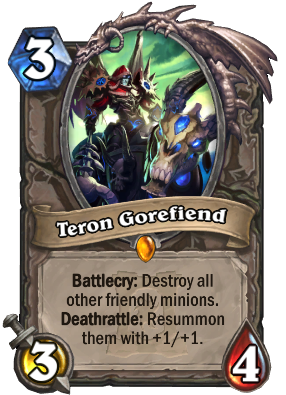
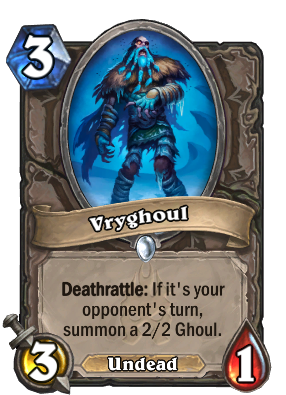
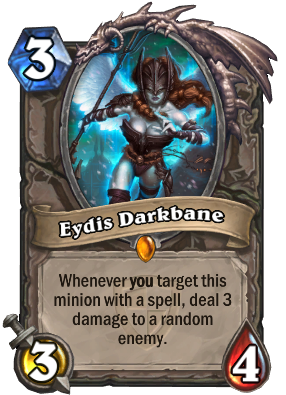
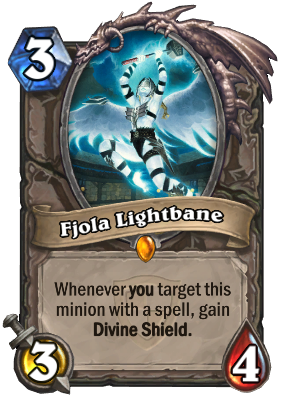
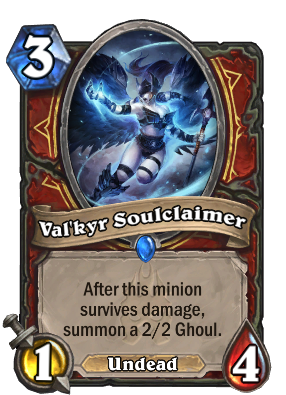
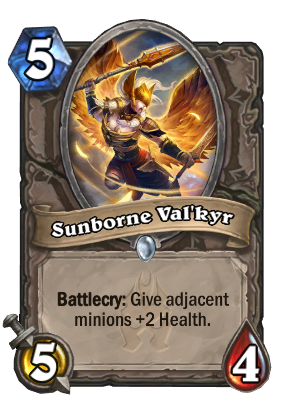
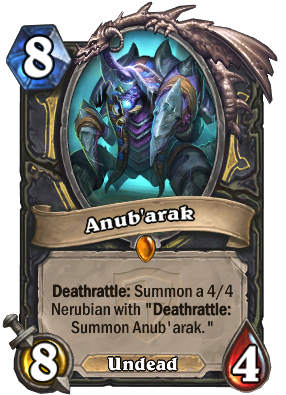
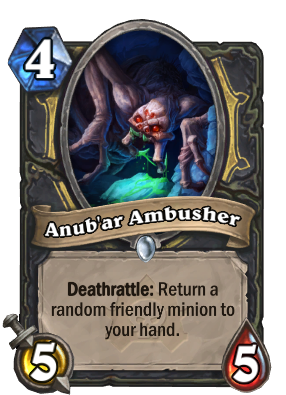
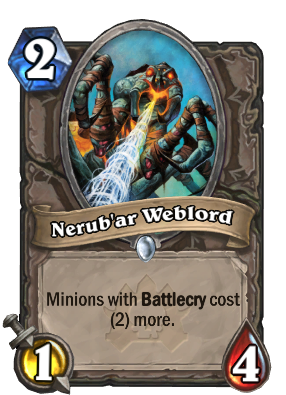
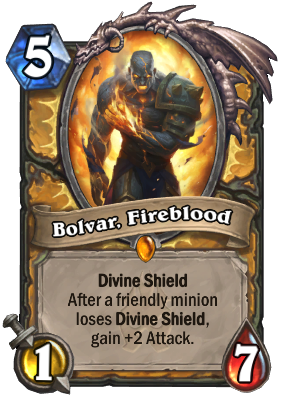
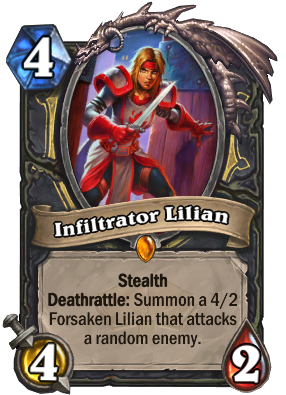
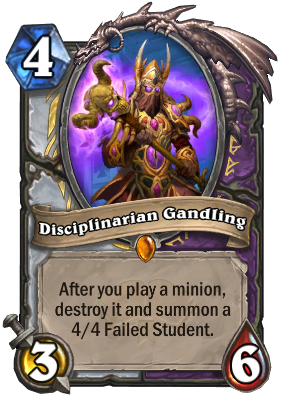
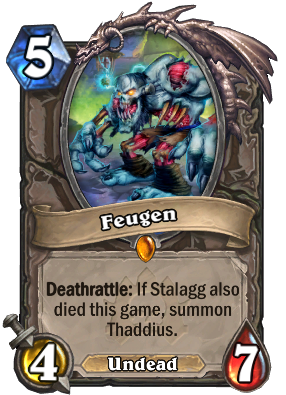
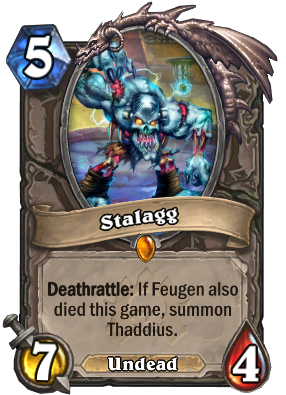
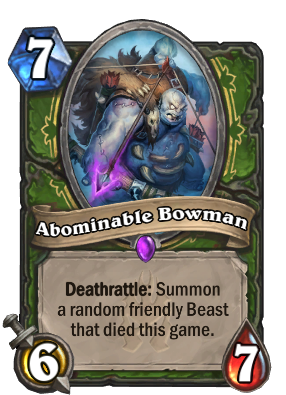
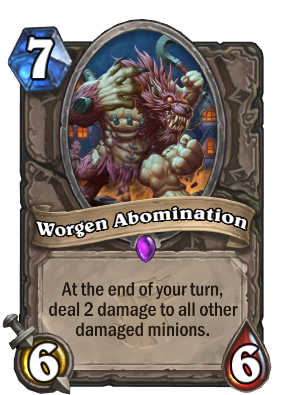
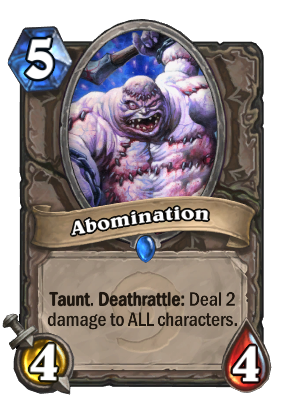

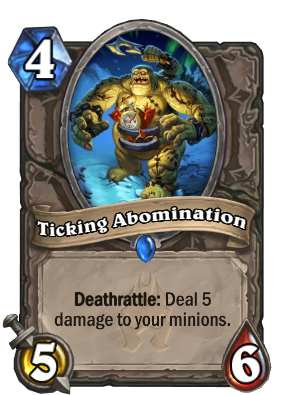
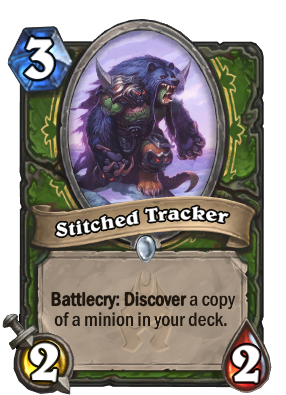
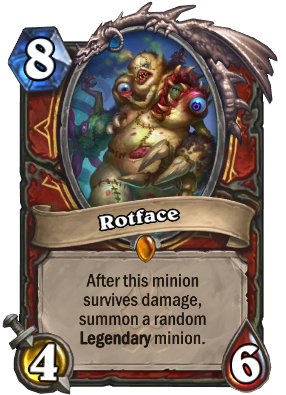
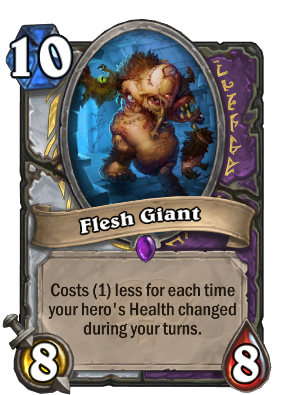
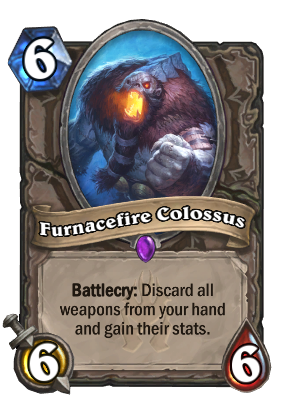
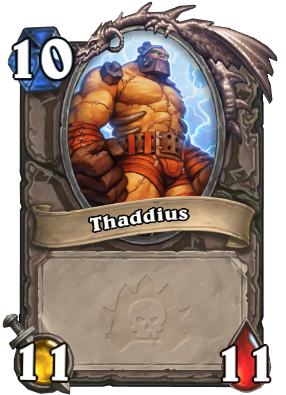
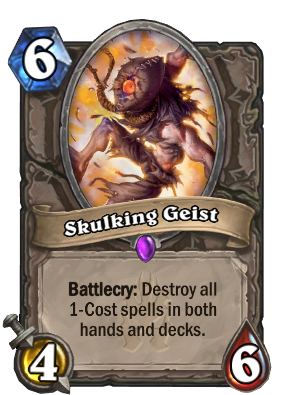
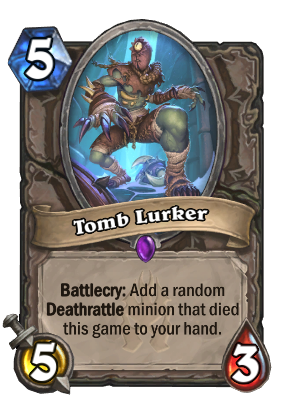
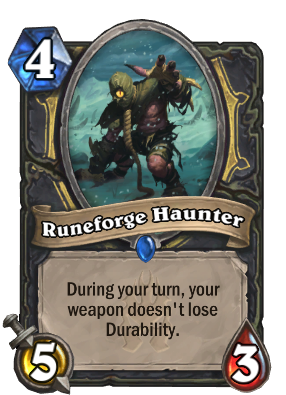
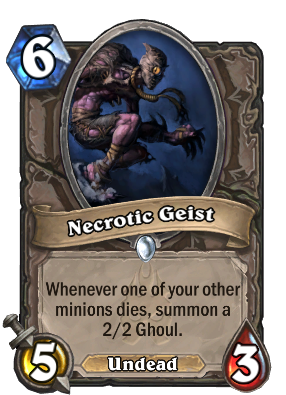
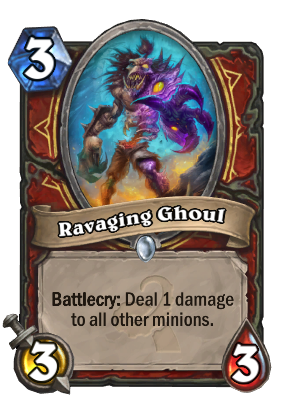
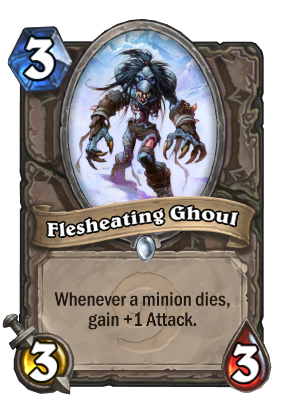
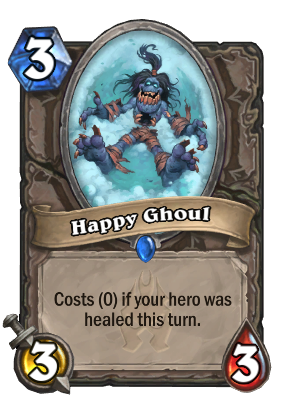
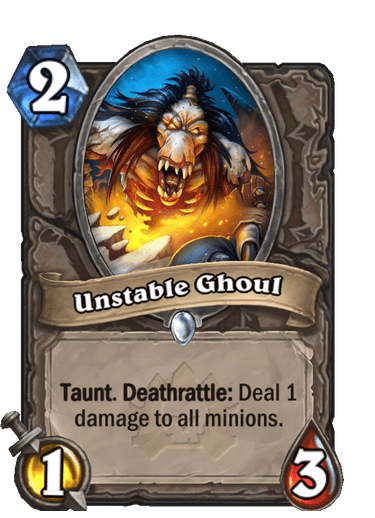
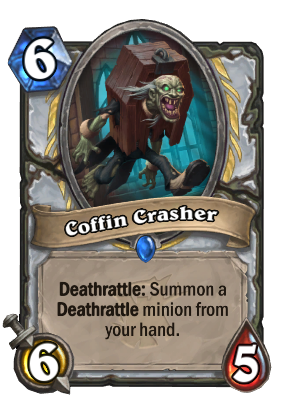
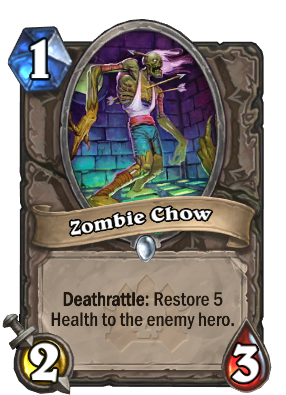
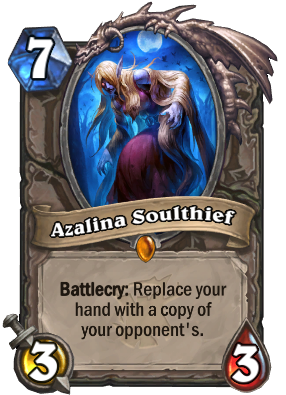
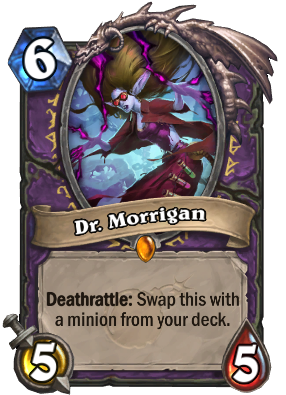
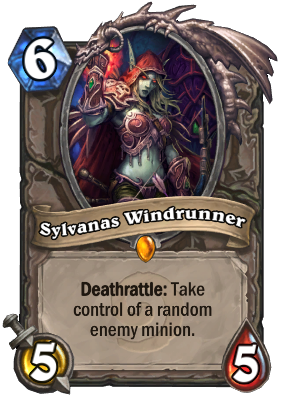
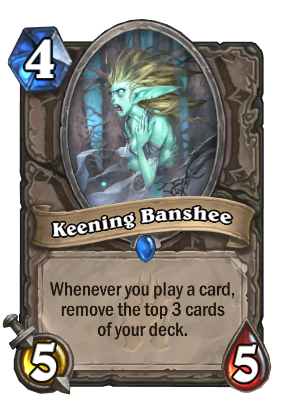
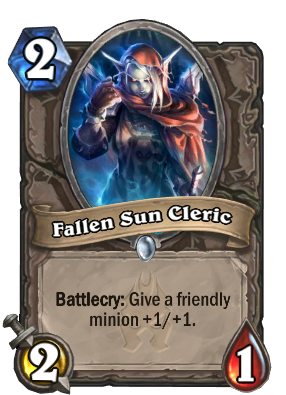
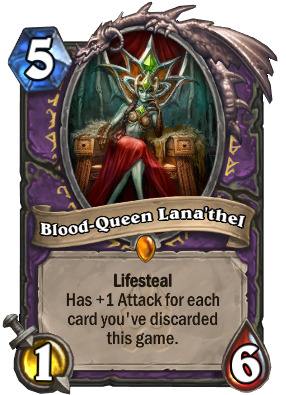
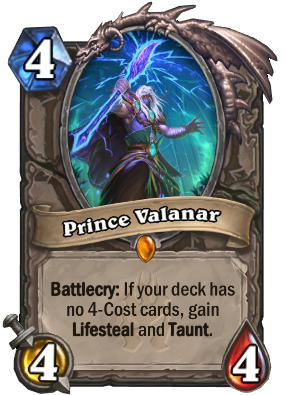
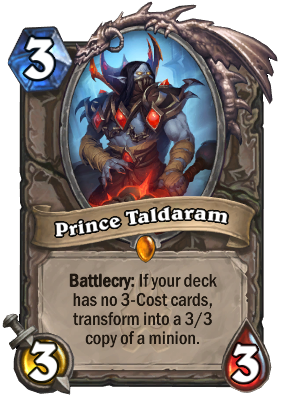
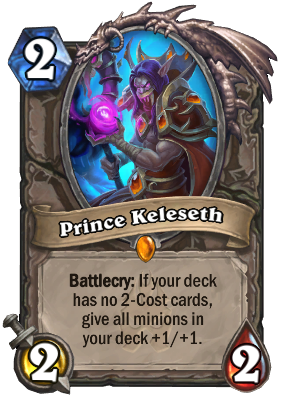
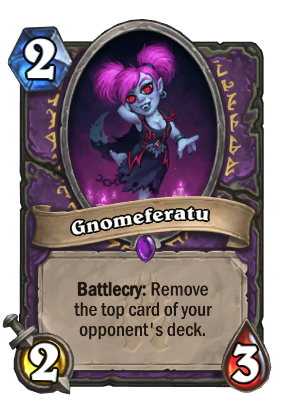
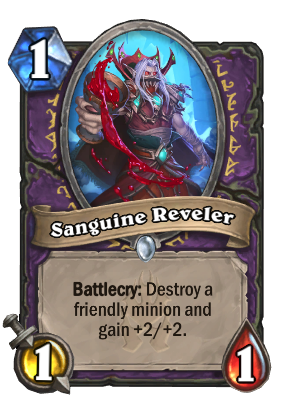
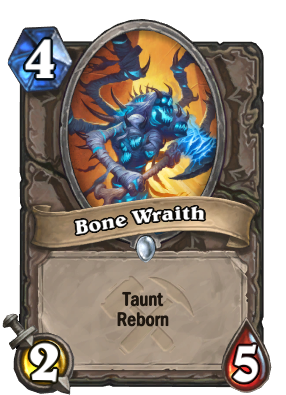
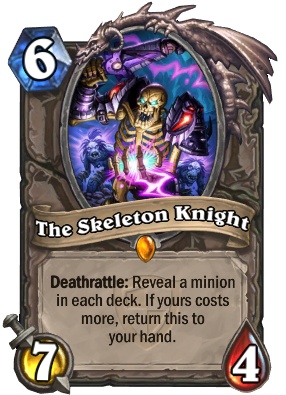
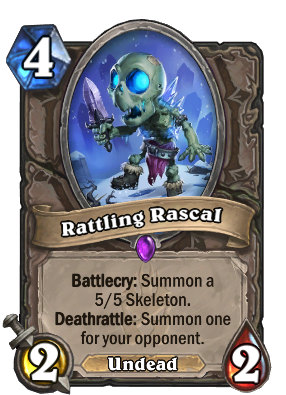
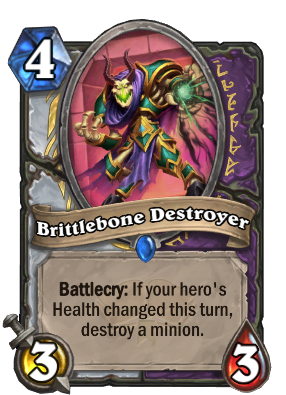
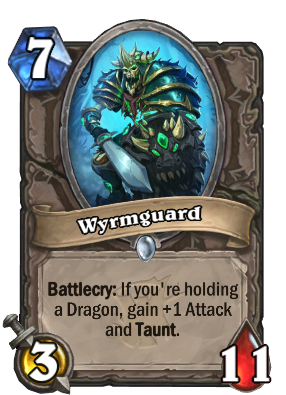
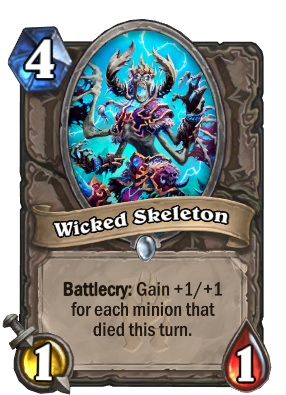
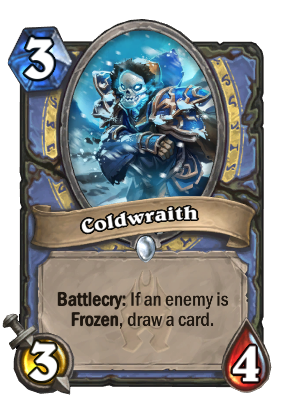
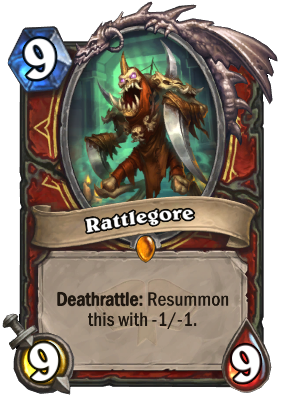
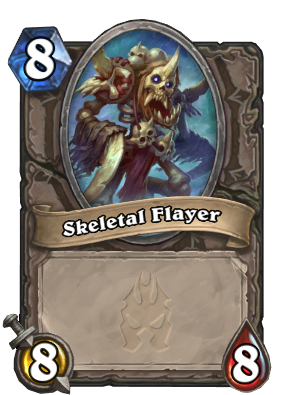
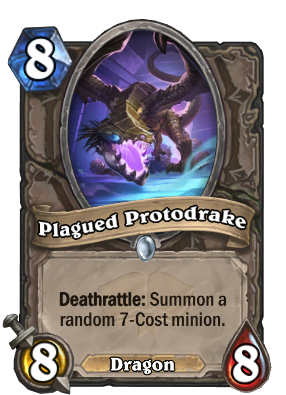
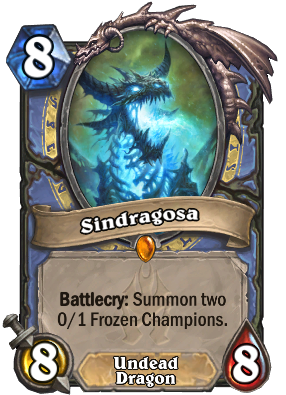
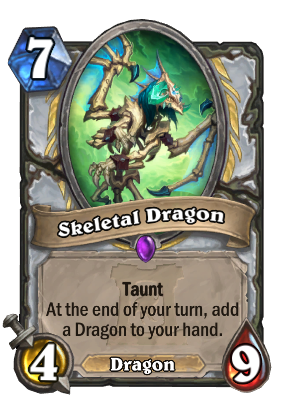
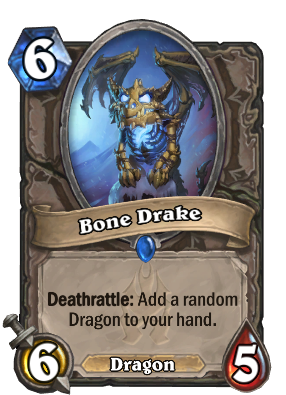
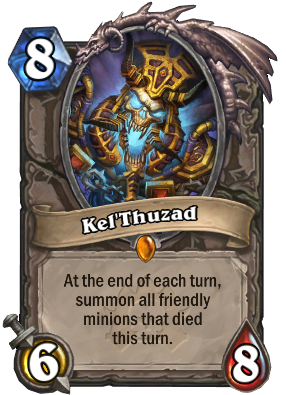
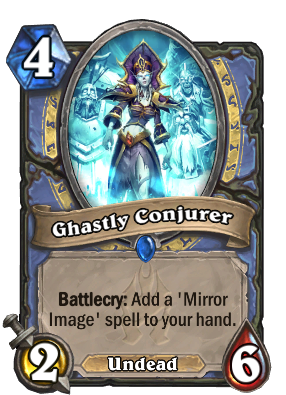
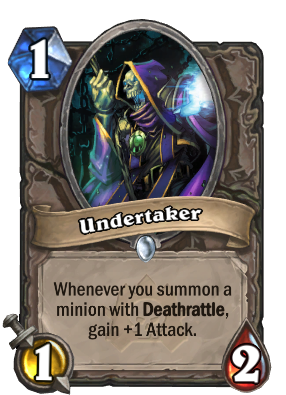
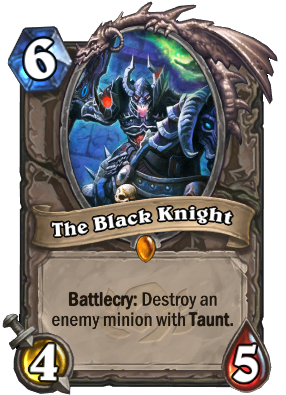
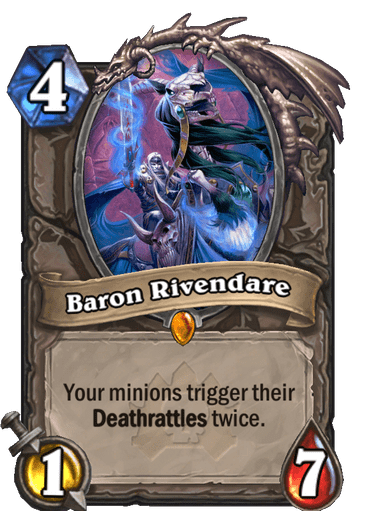
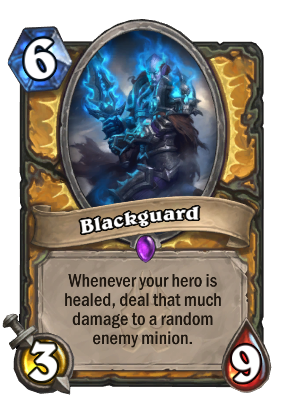
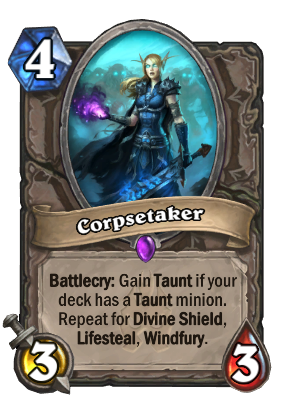
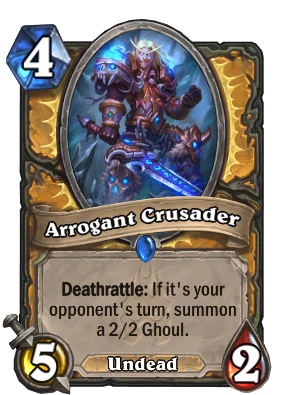
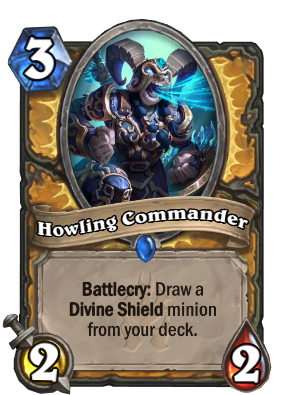
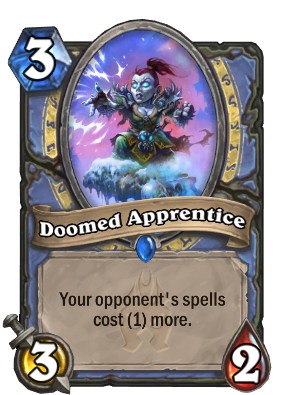
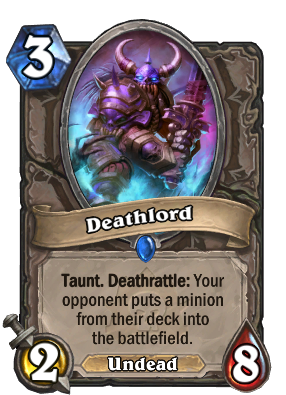
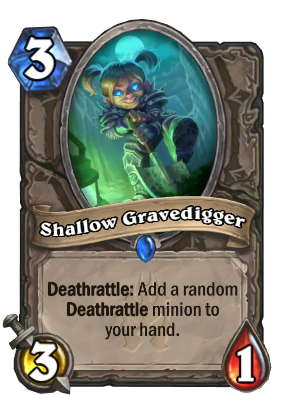
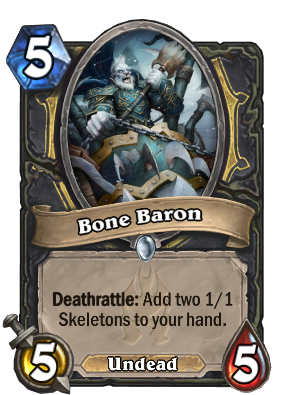
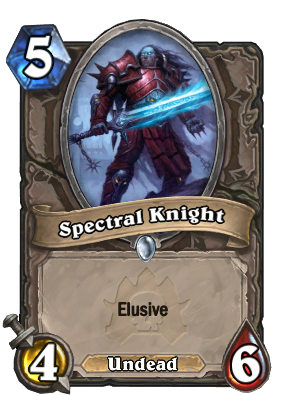
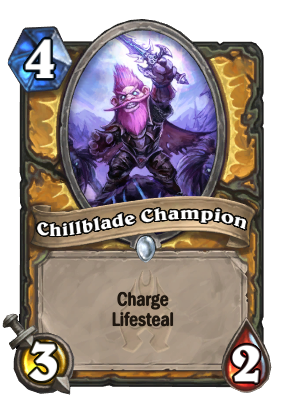
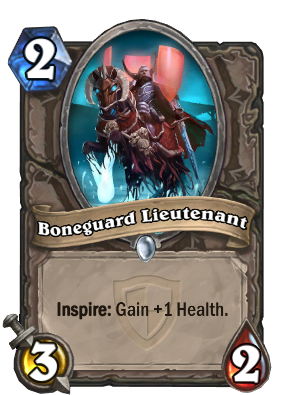
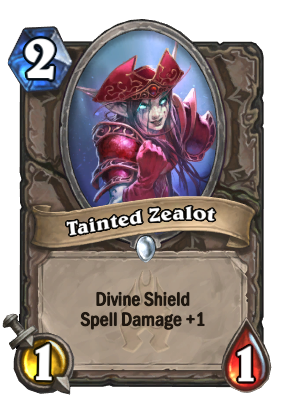
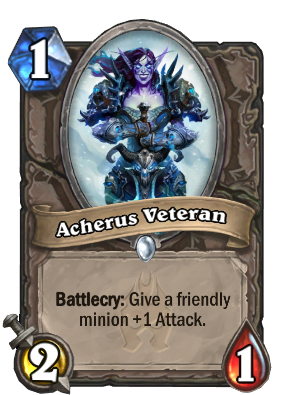
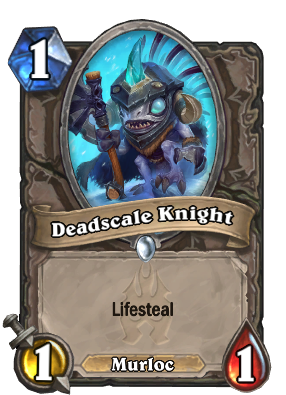
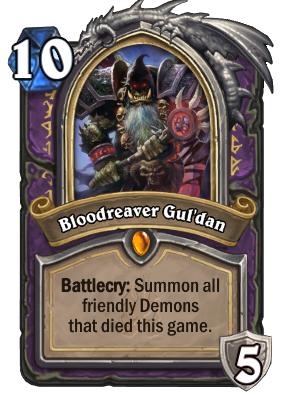
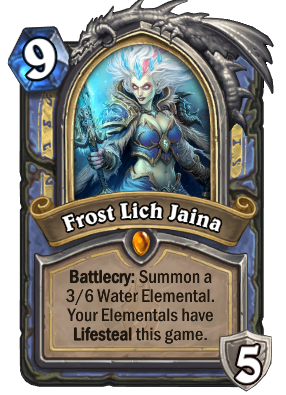
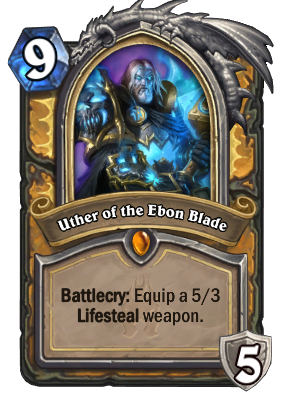
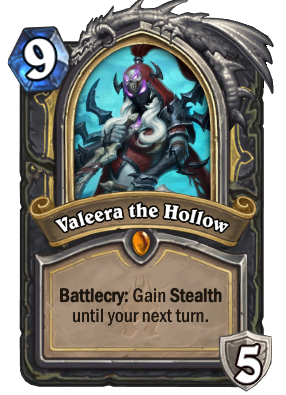
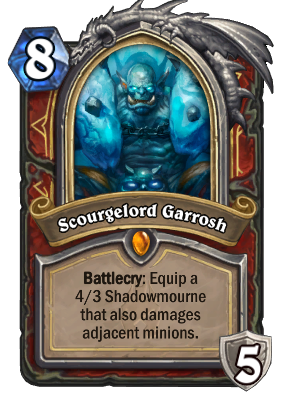
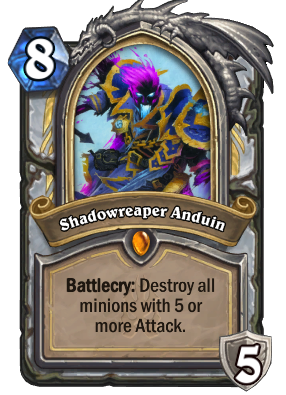
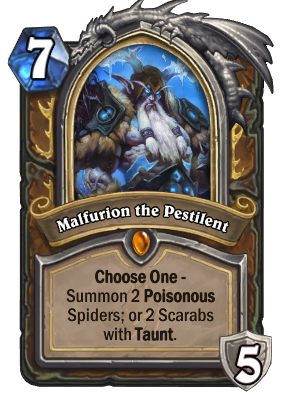
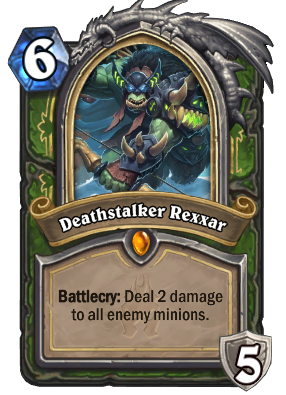
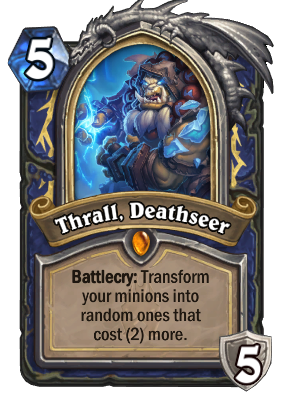
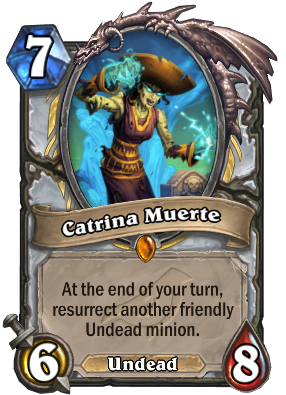
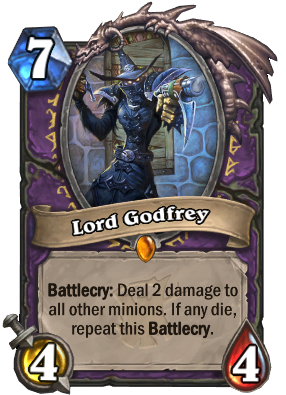
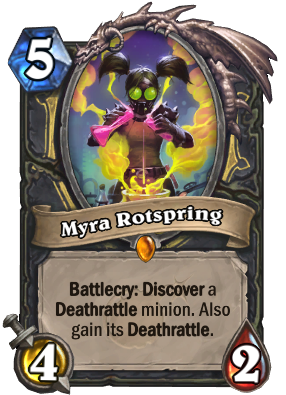
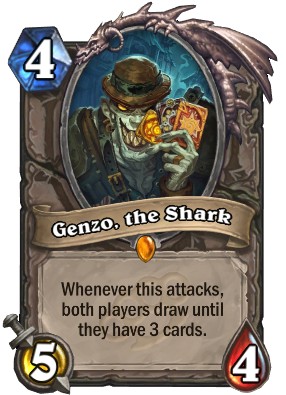
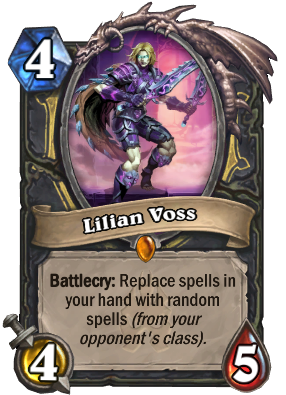
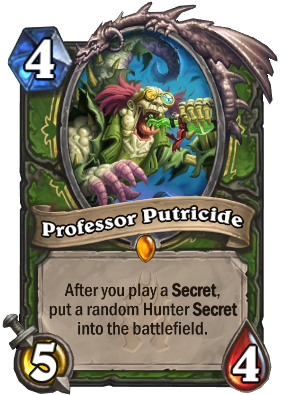
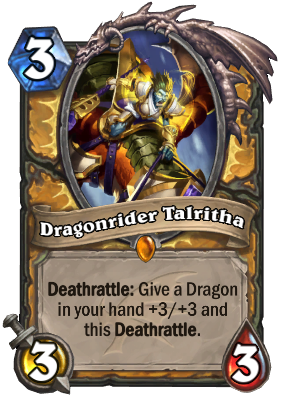
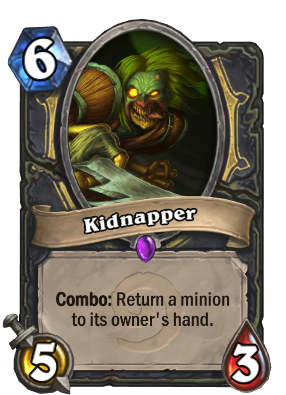
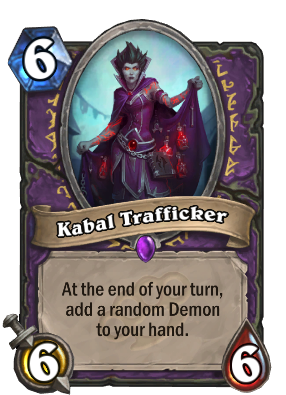
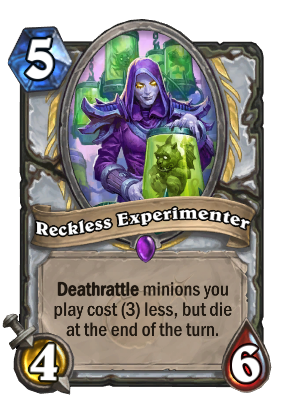
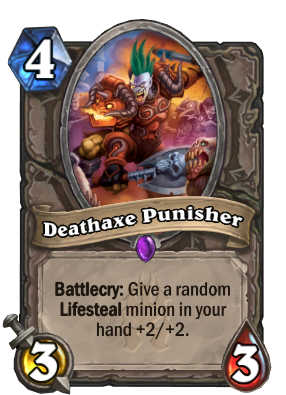
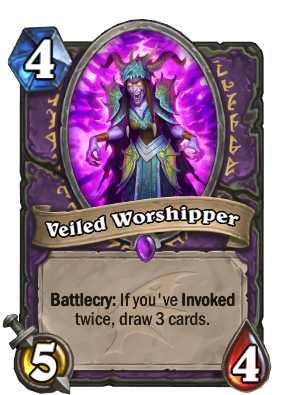
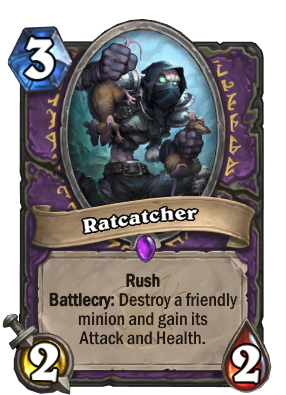
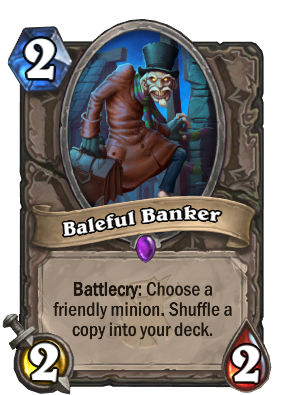
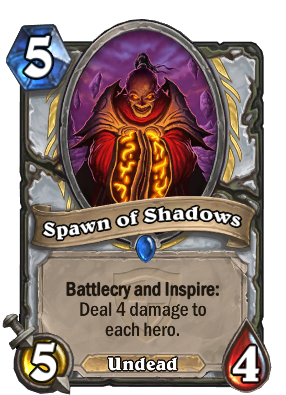
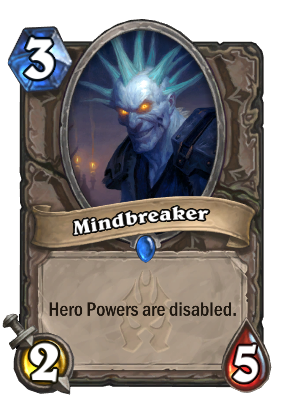
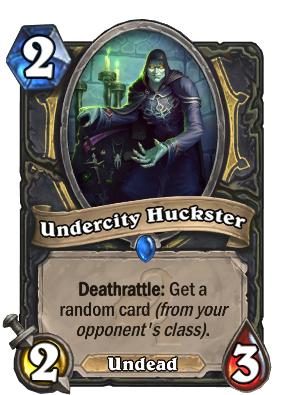
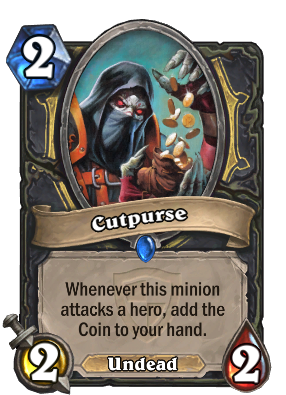
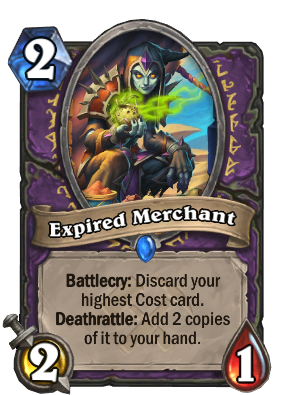
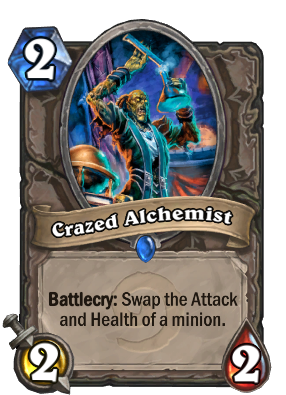
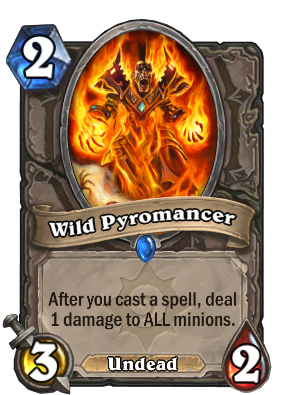
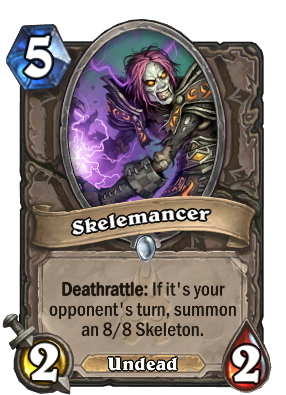
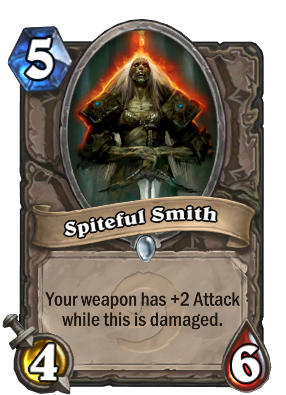
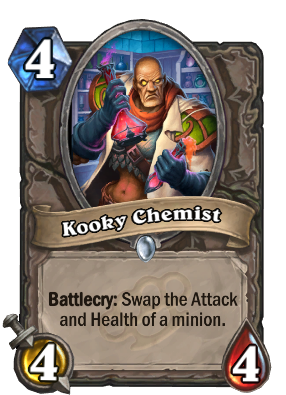
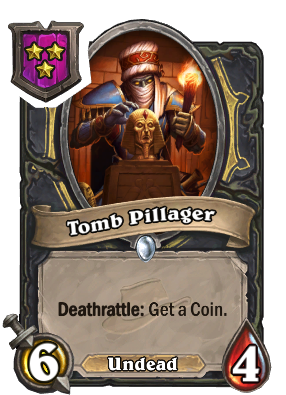
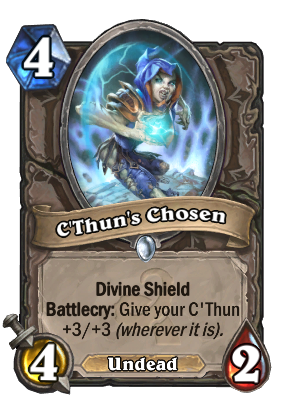
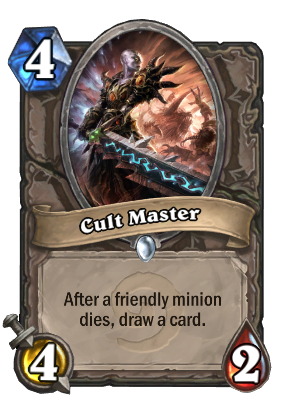
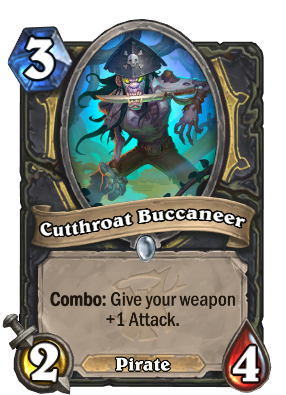
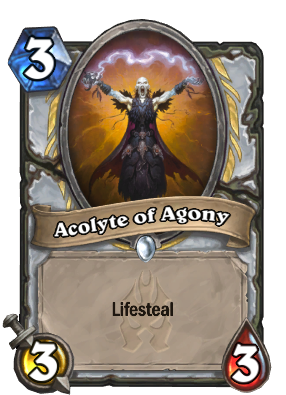
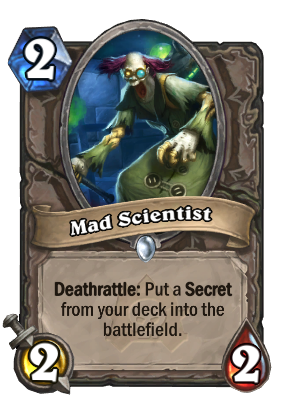
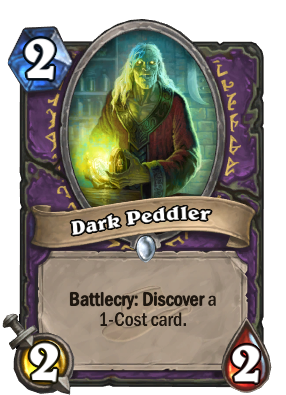
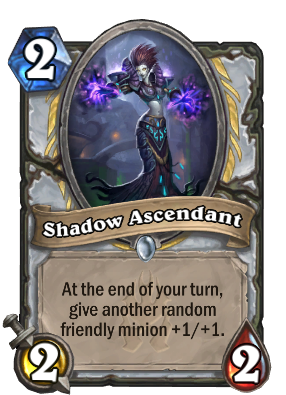
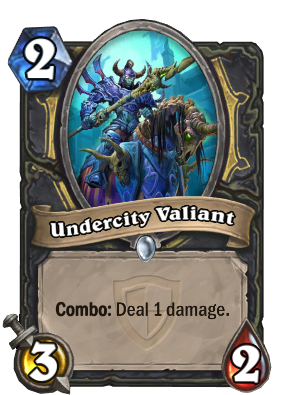
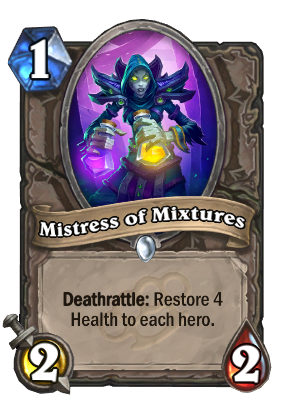
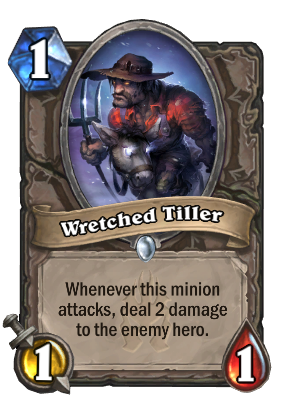
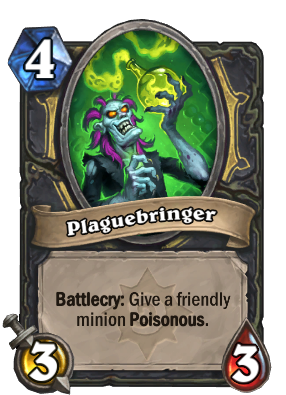
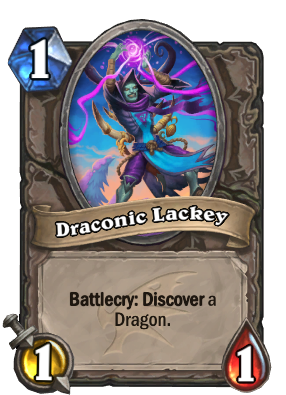
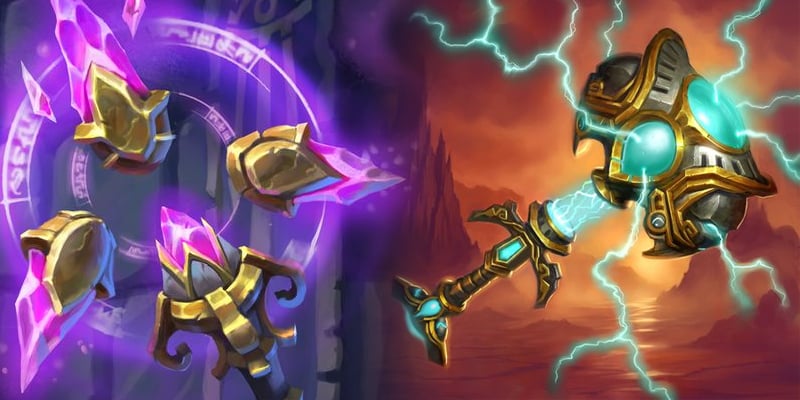
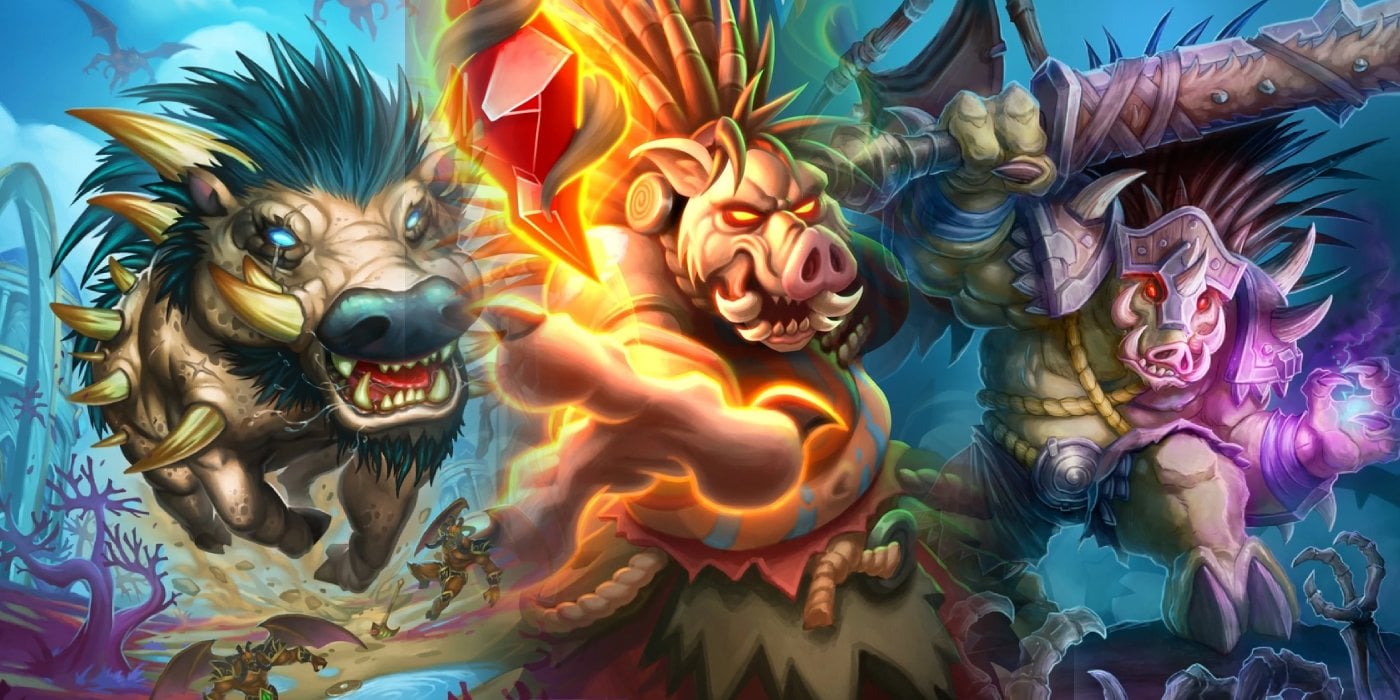
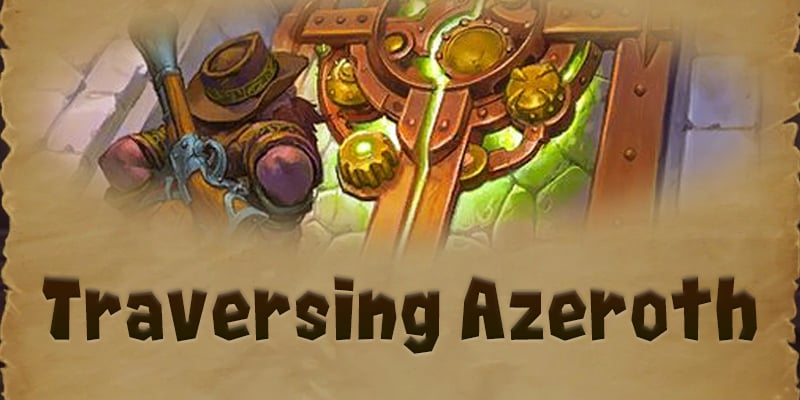
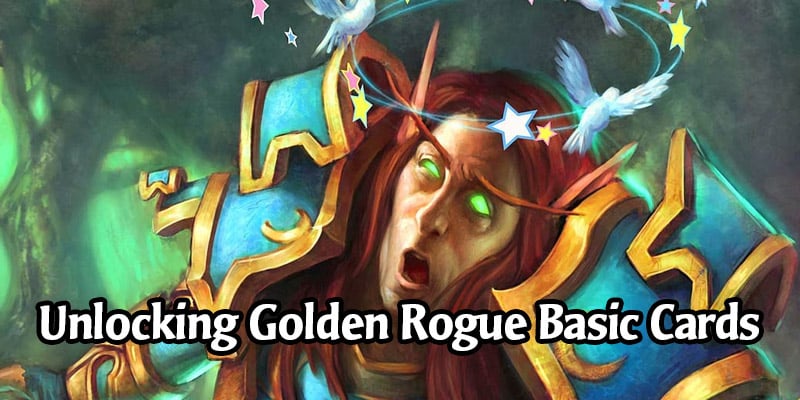
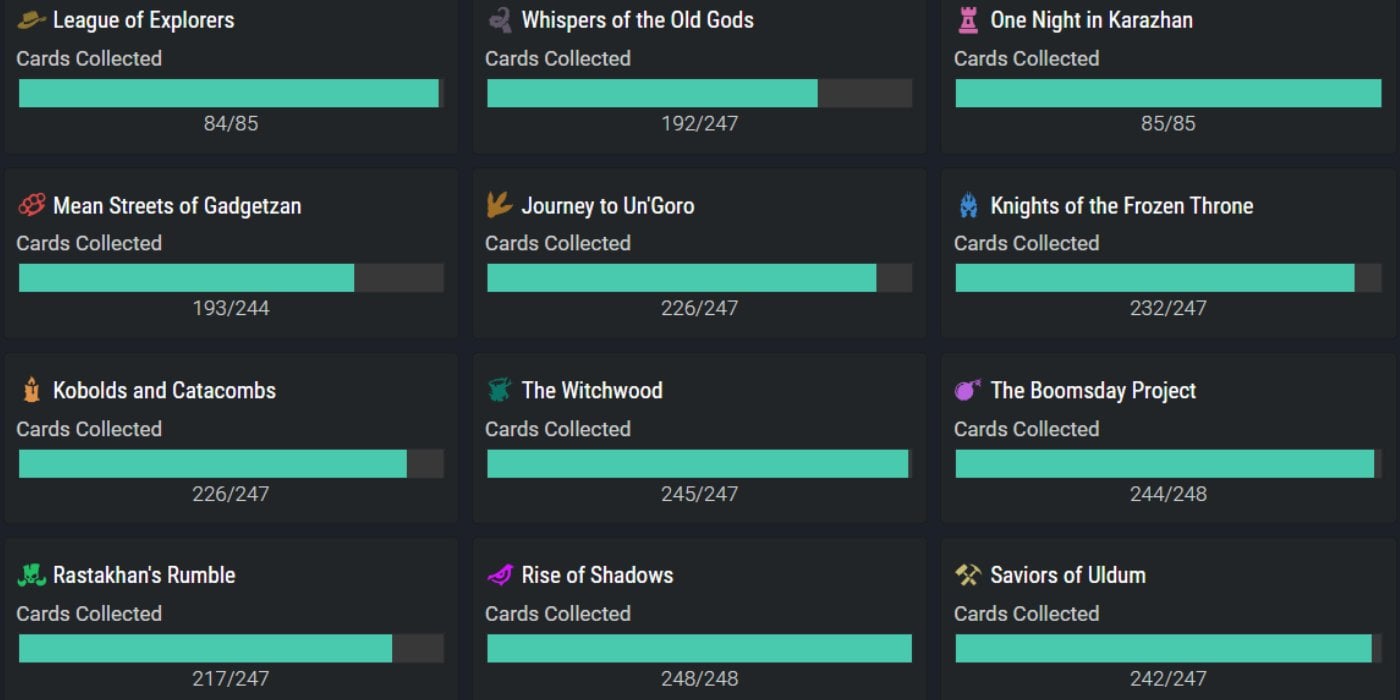
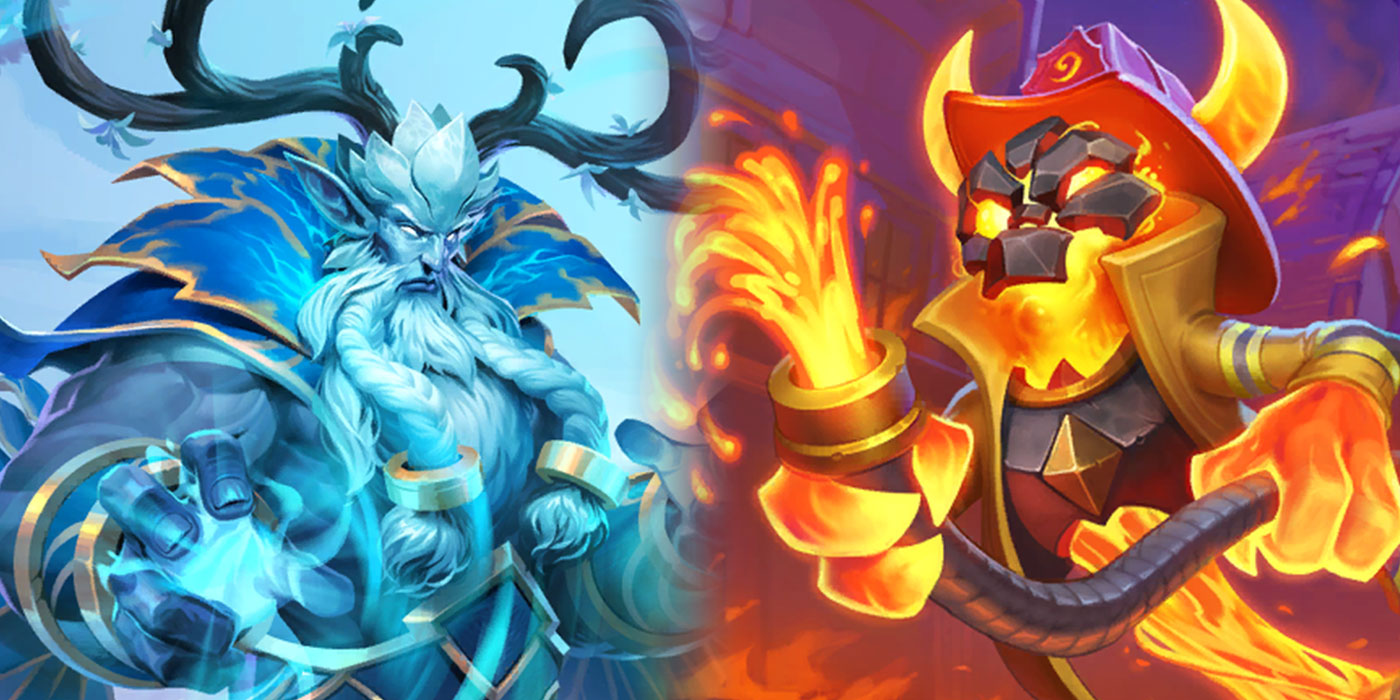
Comments
Holy crap! :O
Oh-my-god!!!
If I could I'd rate this thread 100/5. Amazingly done! My kudos!
Thank you kindly :) I'm glad you enjoyed it.
Great article @GoliathTheDwarf, especially for someone like me who didn't play other Warcraft games (other than Hearthstone).Finally found time to read it (had the tab open for all this time :D).
I think it could use a bump or mention from time to time, so more people will find it :)
Loved every bit of it. Well done!
Awesome article. Thanks A LOT!
As a non-WoW player, it is always an immense pleasure to read your lore articles! Great work as always Goliath!!
Same.
Amazing write up Goliath, it was a blast
Epic! Great write up! Thanks Goliath
Well done Goliath!!!!!!!!!
Thanks Hydra :) I'm glad you liked it. Can't wait to talk more lore on the show next week.
Who read the whole thing? Raise the hand! *raises hand*
*raises hand*
To be fair, given the amount of content, it was quite short ^^
Great shadow bestiary GoliathTheDwarf
Oh yes, this was a very brief summery of a story that has started almost as far back as the original Warcraft games, so a lot has happened. lol